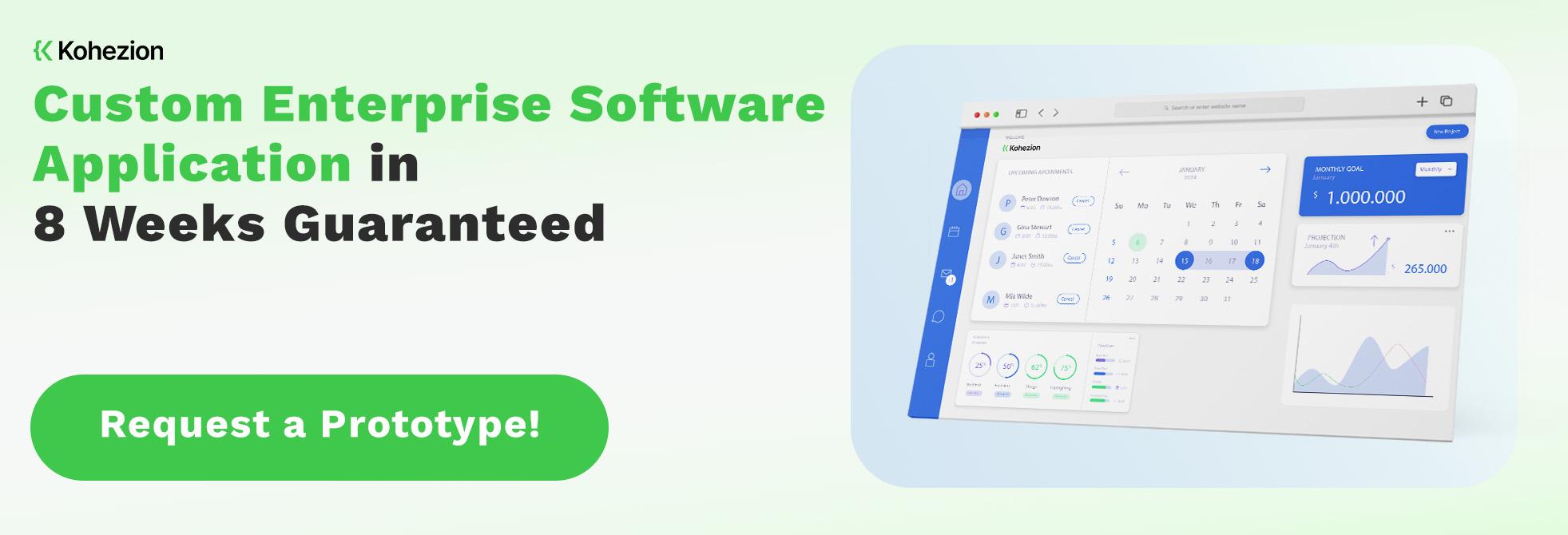The underwriting and rating software market, valued at $5.8 billion in 2023, is expected to grow to $13.9 billion by 2030, with a compound annual growth rate of 12.5% from 2024 to 2030. This rapid growth highlights the increasing demand for efficient and advanced insurance underwriting software.
This article will explore 48 top solutions that can help insurance agencies streamline their operations, improve accuracy, and stay competitive. Whether you're looking for robust management systems or specialized quoting tools, these software options offer features to meet your needs.
We'll buid your first application for you. At no extra cost.
Let us build your first business application for free. Go from an idea to an application in under 2 weeks.

What is Insurance Underwriting Software?
Insurance underwriting software is a technology solution designed for insurance companies to manage and automate underwriting. This type of software assists insurers in efficiently processing underwriting submissions, improving risk assessment accuracy, calculating precise premiums, and improving profitability with more accurate risk pricing.
The goal is to enable insurers to make quicker, data-driven decisions while maintaining compliance with regulatory standards. With a backbone relying on rules and policies set by the users, insurance underwriting software streamlines the contract and claims management, ensuring a seamless integration of underwriting processes into the broader insurance workflow.
Why Is Insurance Underwriting Software Important?
At its core, insurance underwriting software is about sharpening the edge of efficiency and competitiveness. Insurance companies manage risks, regulations, and customer expectations.
This software allows companies to quickly and accurately assess risk, make informed decisions, and convert opportunities into enduring business value, speeding up revenue growth and ensuring profitability, Most importantly, it bridges the gap between what corporate and regulatory bodies demand and what customers need, helping convert prospects into satisfied policyholders.
Benefits of Insurance Underwriting Software
Insurance underwriting software offers many benefits that can significantly improve your business operations. Here are some key advantages that these tools provide.
Quicker Decisions
Insurance underwriting software reduces the time spent on data gathering and analysis thanks to automation and advanced analytics. It facilitates rapid assessments and decisions by providing real-time insights and streamlining communication between stakeholders. As a result, underwriters can approve policies faster and deliver a more responsive service to customers.
Fewer Errors and Biases
Insurance underwriting software applies consistent rules across the board for all policy applications, minimizing human error and unconscious biases. Algorithms can be free of the cognitive biases that sometimes influence human judgment, leading to more equitable and reliable underwriting decisions. With features like automated data verification and validation, these tools ensure the underwriting process is rigorous and factual.
Easier Market Entry
Insurance underwriting software simplifies the task of adhering to complex industry regulations and understanding varied risk profiles. Companies looking to branch into new insurance areas can leverage pre-built templates and analytics to swiftly get up to speed and ensure quicker market entry.
More Personalization
Insurance underwriting software enables a more personalized approach to policy writing. With extensive data analytics at your fingertips, you can tailor policies to meet each customer's individual risks and needs. Customization increases customer satisfaction, as policyholders perceive that their unique circumstances are considered and reflected in their insurance coverage.
Meeting Customer Demand
Insurance underwriting software allows you to respond swiftly to evolving demands, such as offering rapid quotes and policies that align with the customer's lifestyle and needs. It empowers you to deliver high-quality service, building trust and loyalty that keeps customers coming back.
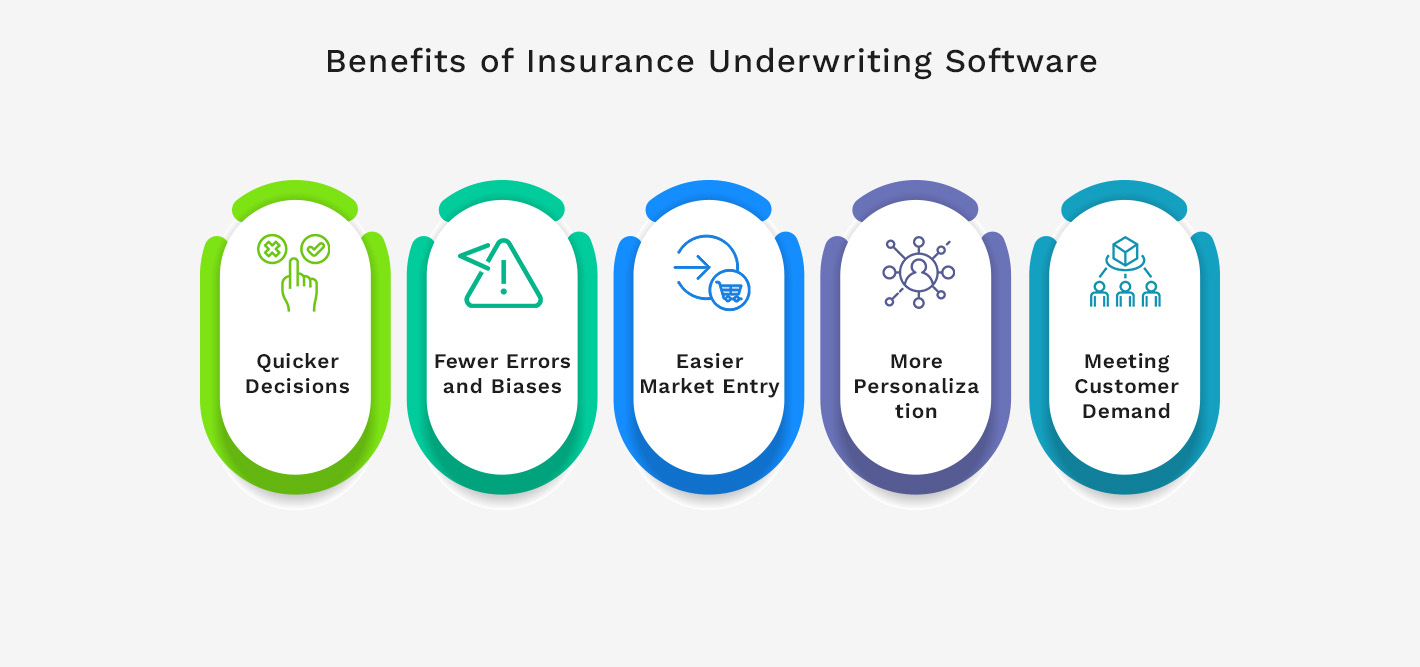
Top 48 insurance underwriting software
Choosing the right insurance underwriting software can greatly improve efficiency and accuracy in your business. Here are the top 48 solutions to consider for your underwriting needs.
1. Kohezion

Kohezion stands out with its feature-rich solutions that automate and optimize financial institutions' underwriting processes. Its robust platform, which is well-suited for fund management, private banking, and asset management, makes it an asset for businesses looking for a sophisticated and reliable tool to manage their insurance product offerings.
Top 5 Features:
- Customizable workflow automation
- Advanced data visualization tools
- Secure cloud-based platform
- Integration with third-party financial tools
- User-friendly interface
Five Benefits:
- Improves operational efficiency with automation
- Improves decision-making with advanced data analytics
- Reduces IT costs with a cloud-based solution
- Streamlines integration with existing systems
- Offers a scalable platform for growing businesses
Two Cons:
- Initial setup can be complex and time-consuming
- Higher cost compared to some simpler alternatives
Best For: Financial institutions focused on asset management and private banking sectors looking for a comprehensive underwriting automation solution.
2. Allfinanz
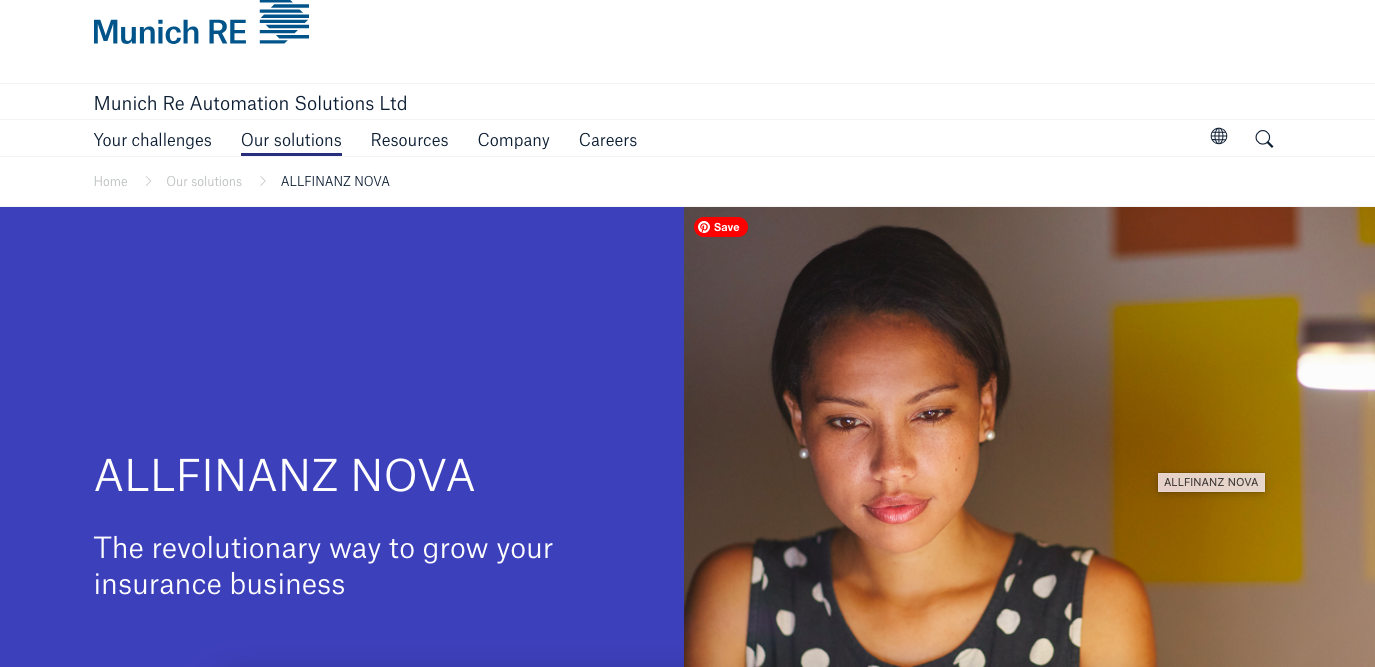
Allfinanz offers a powerful suite for automating the underwriting process for life insurance. It helps companies transform how they capture data, handle compliance, and manage documentation and workflows. Its specialty lies in providing insurance-related risk solutions and accelerating digital transformation for its users, ensuring they stay competitive.
Top 5 Features:
- Automated underwriting workflow
- Comprehensive compliance management
- Advanced risk assessment tools
- Seamless integration capabilities
- Real-time data capture and analysis
Five Benefits:
- Accelerates the underwriting process
- Improves compliance and reduces risk
- Improves data accuracy and accessibility
- Facilitates digital transformation
- Increases competitive edge in the market
Two Cons:
- Can be expensive for small businesses
- Requires training for full utilization of features
Best For: Life insurance providers looking for comprehensive software to modernize and automate their underwriting. This makes it a great fit for insurers intent on digitalizing their core processes.
3. Castle Line
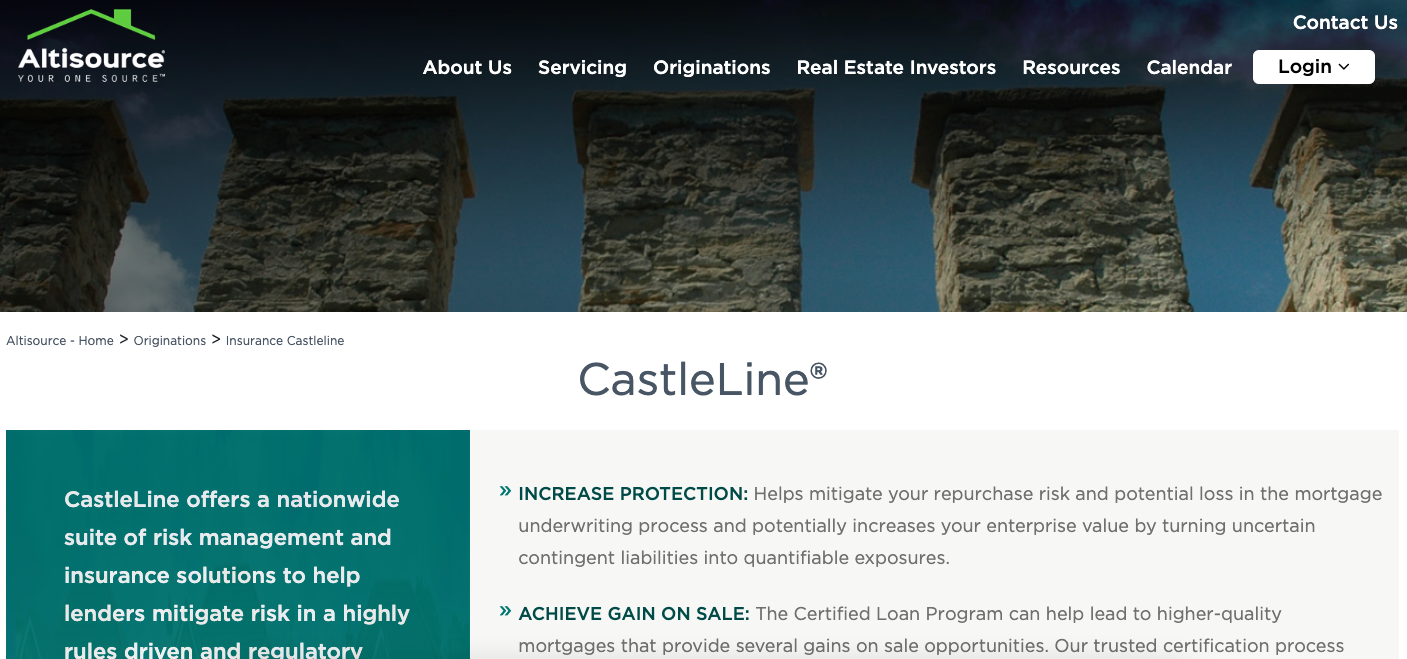
Castle Line focuses on property and casualty insurance providers. It targets the efficiency and precision requirements of modern insurance underwriting with data-driven insights and automation.
Top 5 Features:
- Data-driven underwriting insights
- Automation of underwriting tasks
- Property and casualty specialization
- Customer satisfaction-focused tools
- Integration with legacy systems
Five Benefits:
- Increases underwriting accuracy
- Speeds up underwriting processes
- Improves customer experience
- Reduces operational costs
- Provides detailed risk evaluations
Two Cons:
- May require significant customization
- Learning curve for advanced features
Best For: Property and casualty insurance companies searching for software that can modernize their risk evaluation while considering industry-specific demands.
4. Intellect Xponent
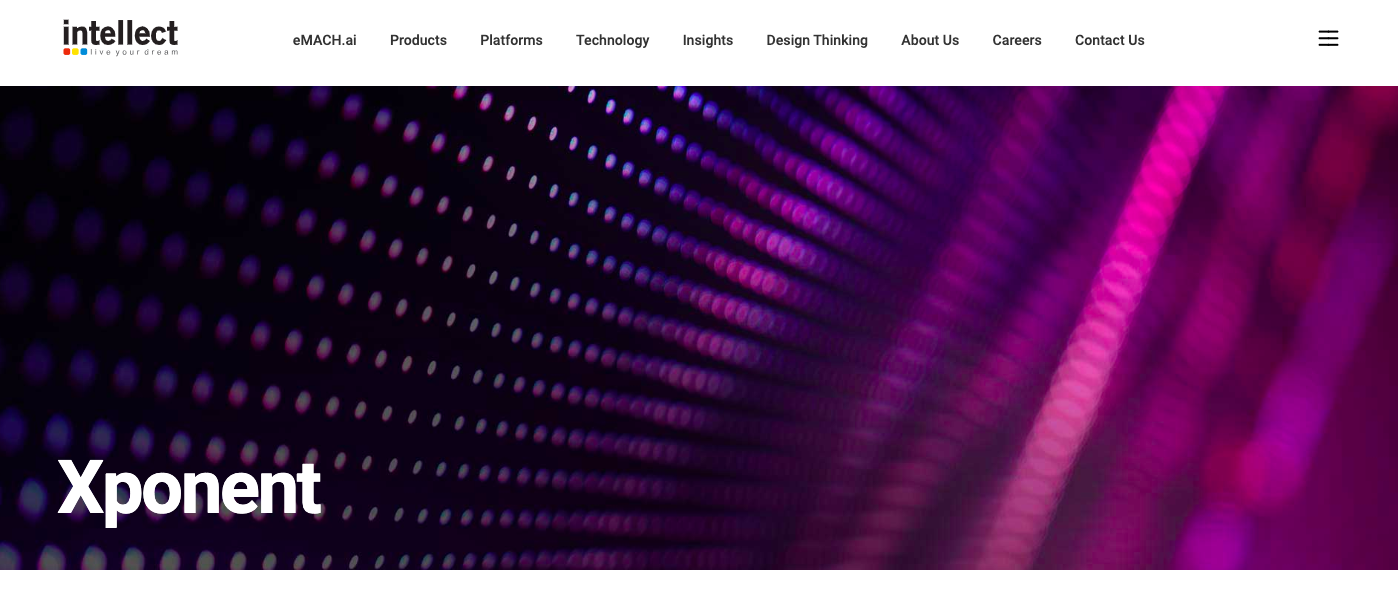
Intellect Xponent is an advanced AI and analytics-based underwriting workstation designed to refine the underwriting of commercial lines. With its sophisticated technology, this software enables insurers to handle multi-section risks and commoditized product offerings. Intellect Xponent is suitable for a range of commercial non-life insurance products.
Top 5 Features:
- AI-driven underwriting engine
- Advanced analytics and reporting
- Multi-section risk handling
- Seamless workflow integration
- Comprehensive risk assessment tools
Five Benefits:
- Streamlines complex underwriting tasks
- Improves decision-making with AI insights
- Reduces time to process applications
- Improves risk assessment accuracy
- Increases operational efficiency
Two Cons:
- High initial implementation cost
- Requires significant data management efforts
Best For: Commercial insurers eager to adopt AI-driven underwriting practices, especially those managing a broad range of products and geographies.
5. Aura
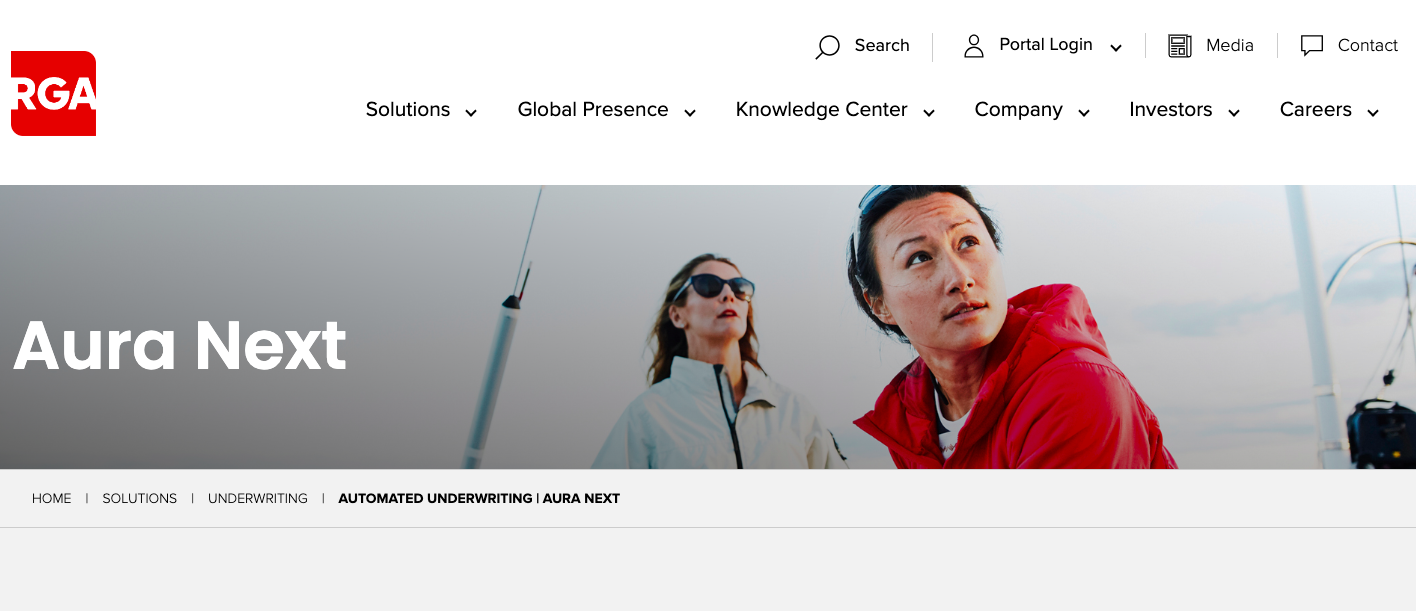
The AURA platform is powered by the extensive underwriting and analytics expertise of RGA. It particularly caters to life insurance companies that demand sophisticated data analysis and decision-making support. Aura has over 250 employees headquartered in Chesterfield and a history dating back to 1973, making it a reputable and experienced choice for insurers.
Top 5 Features:
- Automated risk analysis
- Advanced data analytics
- Real-time underwriting decisions
- Integration with existing systems
- User-friendly interface
Five Benefits:
- Improves underwriting accuracy
- Reduces decision-making time
- Improves data-driven insights
- Streamlines operational processes
- Scales easily with business growth
Two Cons:
- Can be costly for smaller firms
- Requires continuous data updates for accuracy
Best For: Life insurers seeking an e-underwriting platform that combines deep industry insights with state-of-the-art risk assessment and automation analytics.
6. Oracle Insurance Insbridge Enterprise Rating
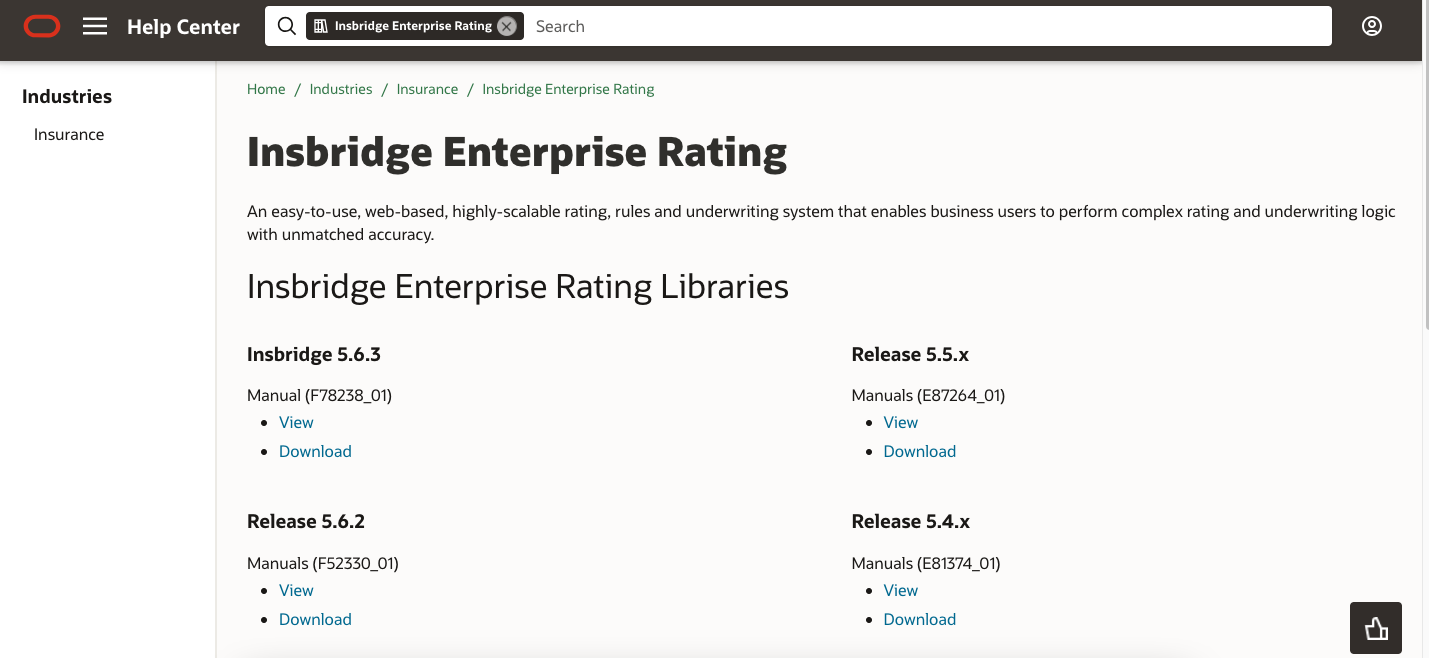
Oracle Insurance Insbridge Enterprise Rating is a dynamic solution that caters to different business lines within the insurance sector. Its architecture is built to support complex, multi-line rate plans, allowing for an enterprise-wide deployment. It offers a winning combination of powerful product features and the solid backing of a globally recognized brand.
Top 5 Features:
- Comprehensive rate management
- Support for multi-line rate plans
- Enterprise-wide deployment capabilities
- Advanced rating algorithms
- Integration with Oracle's suite of products
Five Benefits:
- Improves rating accuracy and consistency
- Supports complex rate structures
- Reduces time-to-market for new products
- Provides robust support and updates
- Increases operational efficiency
Two Cons:
- Requires specialized knowledge for setup and management
- Higher cost compared to niche solutions
Best For: Insurers looking for an extensive rate management solution that is capable of adapting to changing business demands.
7. Cirrus
Cirrus is a cloud-based, configurable solution that stands out for its readiness to generate quotes. It focuses on information technology, insurance, and software specialties. This makes it appealing to businesses looking for a blend of speed and personalization within the underwriting software market. Founded in 1982 and based in Naperville, Cirrus has a veteran presence in the industry, suggesting a deep understanding of insurance needs.
Top 5 Features:
- Cloud-based deployment
- Instant quote generation
- Configurable workflows
- Integration with IT systems
- Real-time data analytics
Five Benefits:
- Quick implementation and setup
- Reduces infrastructure costs
- Improves quoting accuracy
- Provides flexibility and scalability
- Improves customer response times
Two Cons:
- May have limited offline capabilities
- Initial customization can be resource-intensive
Best For: Insurance companies seeking agile and user-friendly underwriting software that can deliver immediate quoting capabilities with the added benefits of cloud-based flexibility.
8. IVANS Rating Services
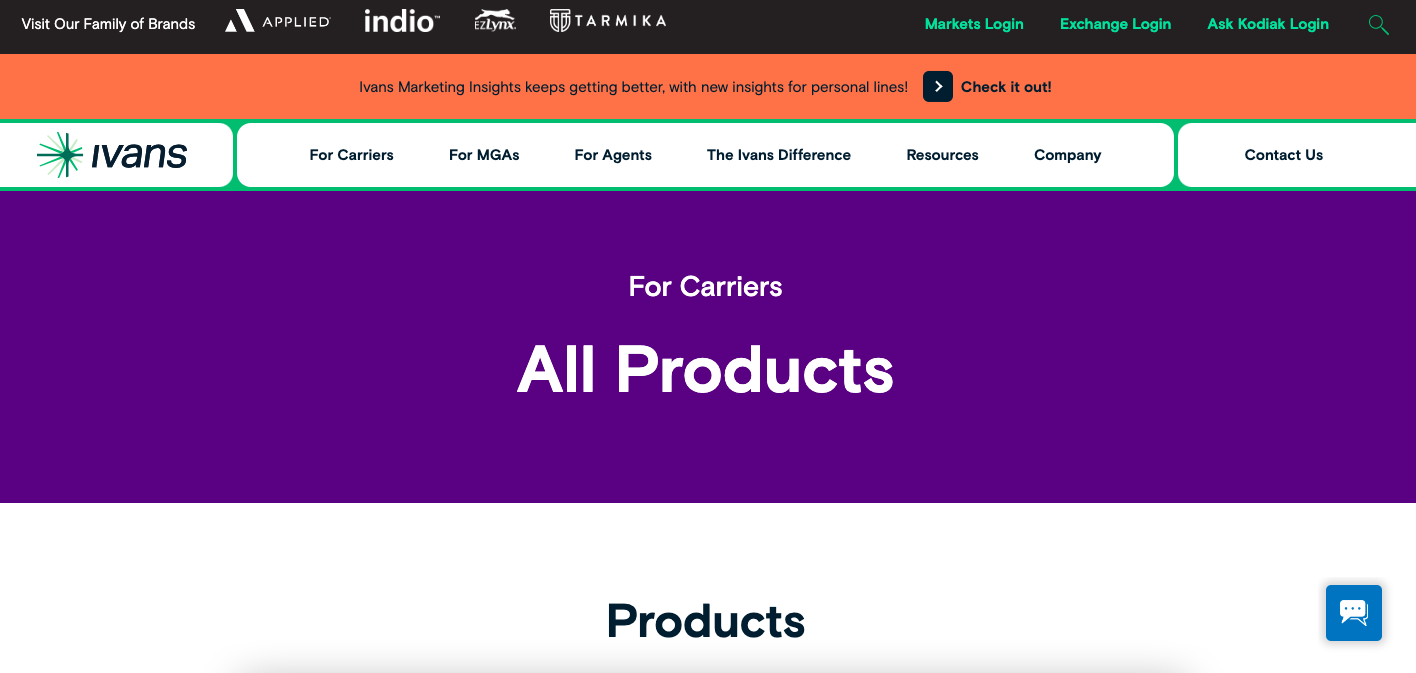
IVANS Rating Services is a cloud-based, fully integrated platform designed to exchange quote information with an entire distribution channel. It boasts specialties in network and data solutions, along with commercial insurance software.
Top 5 Features:
- Cloud-based platform
- Full integration with distribution channels
- Rapid quote information exchange
- Network and data solutions
- Commercial insurance focus
Five Benefits:
- Speeds up the rate distribution process
- Improves data accuracy and reliability
- Reduces operational bottlenecks
- Improves communication across channels
- Supports business scalability
Two Cons:
- Dependence on Internet connectivity
- May require training for optimal use
Best For: Insurance agencies and carriers in the commercial sector looking to optimize their rate distribution process and improve channel communication.
9. RiskMeter Online
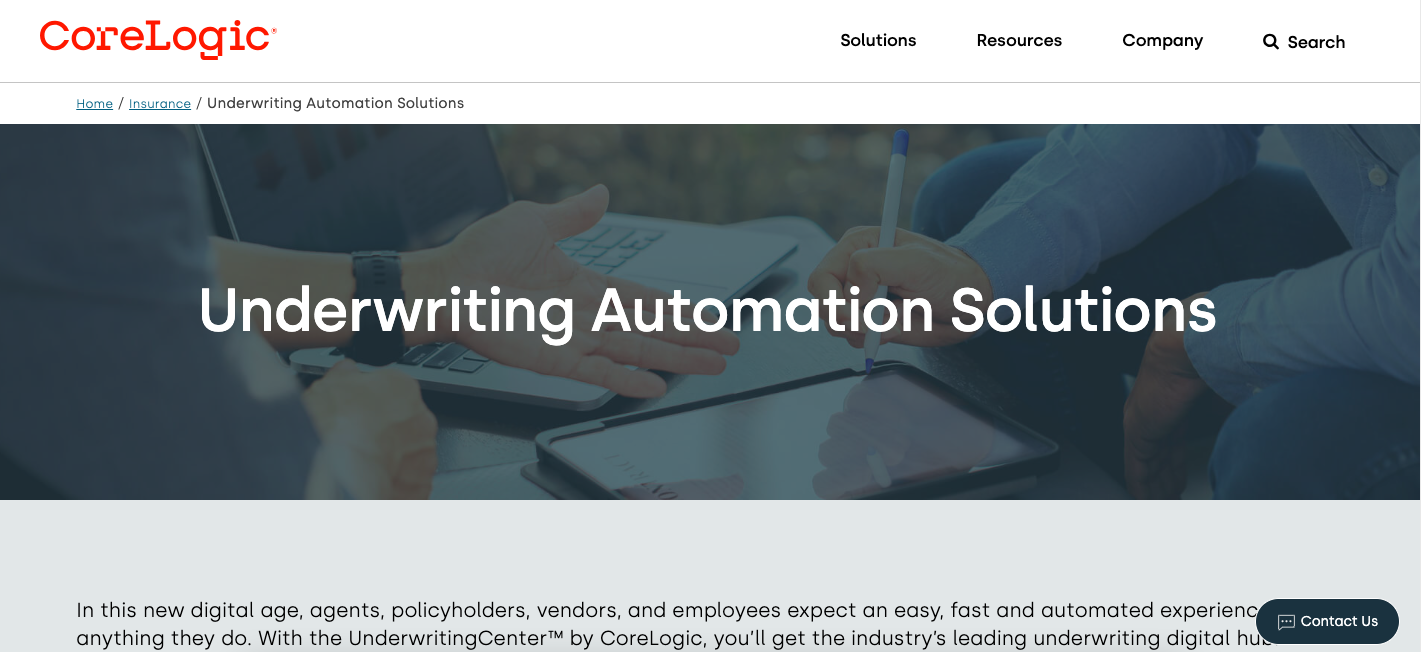
RiskMeter Online is great for underwriters needing instant access to natural hazard risk data. This on-demand insurance platform delivers accurate, location-based risk determinations quickly and reliably.
Top 5 Features:
- Instant natural hazard risk data
- Location-based risk assessment
- On-demand platform
- Detailed hazard reports
- Integration with underwriting systems
Five Benefits:
- Improves risk evaluation accuracy
- Speeds up underwriting decisions
- Reduces data collection time
- Improves agent and broker efficiency
- Provides reliable, up-to-date risk information
Two Cons:
- Limited to natural hazard risk data
- Subscription costs can add up
Best For: Underwriters, agents, and brokers within the property insurance sector looking for a solution to streamline their assessment of location-based natural hazard risks.
10. InsurQuote
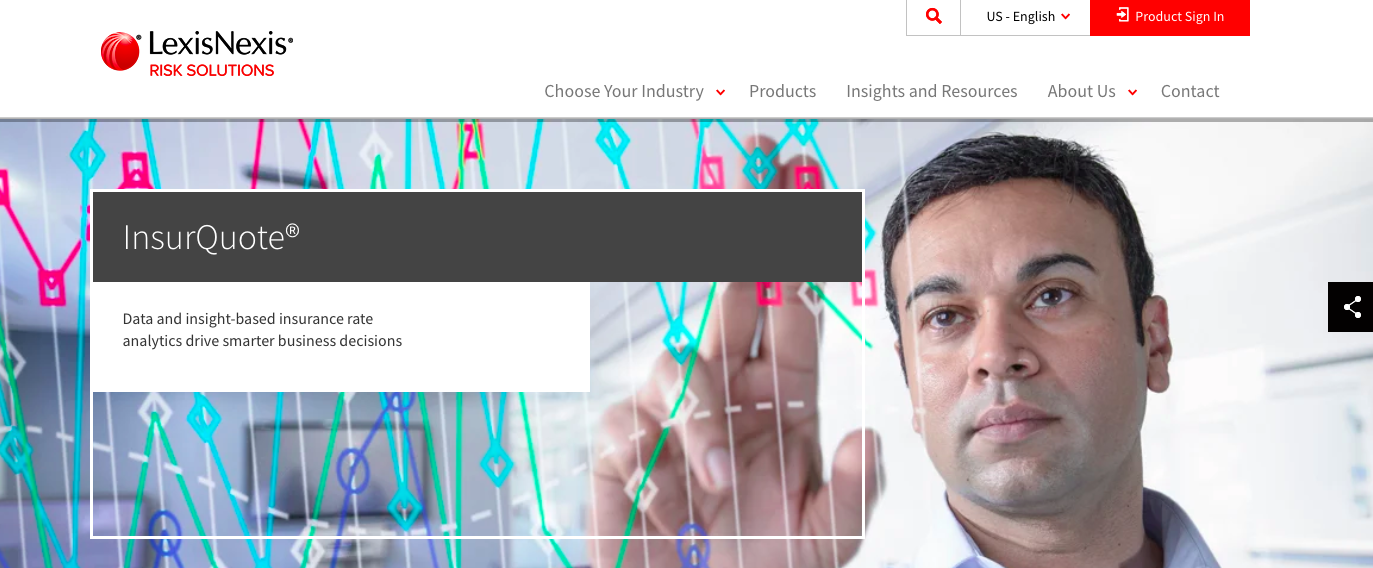
InsurQuote is a comprehensive solution for multi-line rate comparisons. It automates quote generation and streamlines the underwriting process. It is used mostly by life and annuity insurers to handle high volumes of quotes while maintaining accuracy. InsurQuote emphasizes efficiency and user-friendly operations, allowing insurers to focus on client needs and market demands.
Top 5 Features:
- Multi-line rate comparisons
- Automated quote generation
- High-volume quote handling
- Integration with policy management systems
- User-friendly interface
Five Benefits:
- Increases quoting efficiency
- Reduces errors in quote generation
- Improves customer satisfaction
- Streamlines the underwriting process
- Supports high quote volumes
Two Cons:
- Can be costly for low-volume users
- Requires integration with existing systems
Best For: Life insurance and annuity providers seeking to speed up their quote-to-issue ratio.
11. Logical Glue
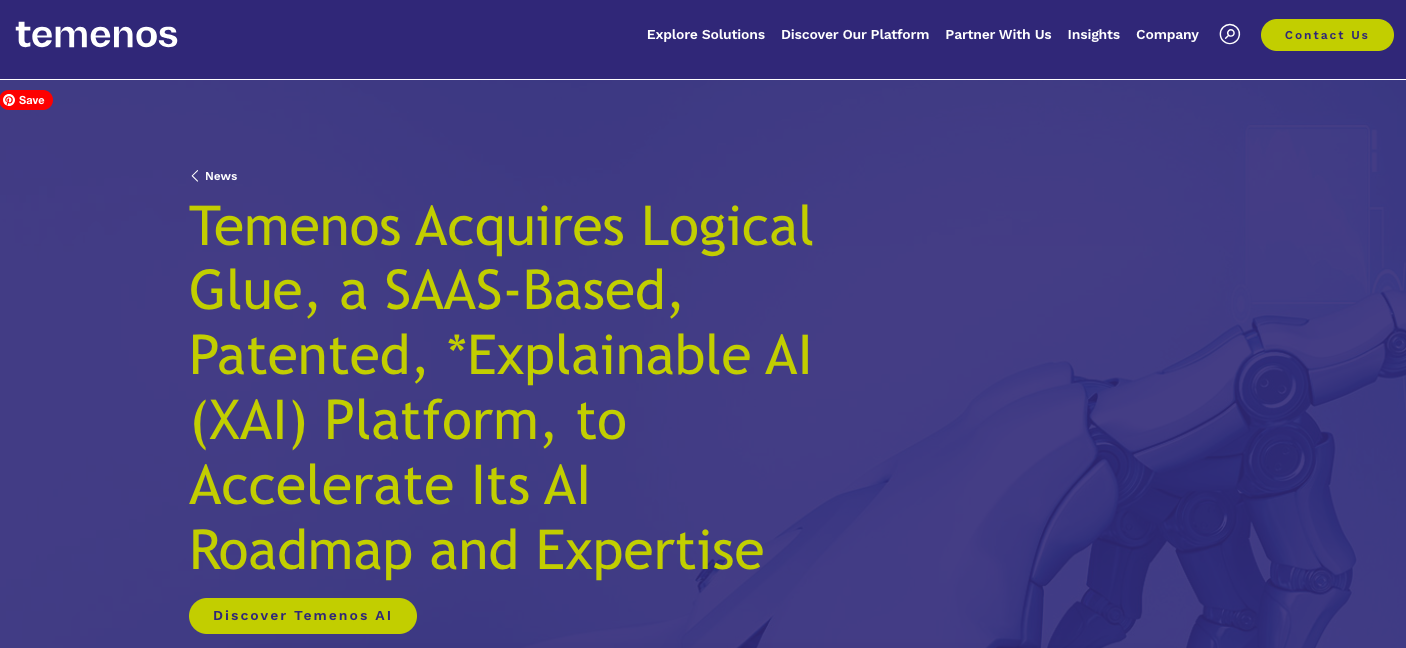
Logical Glue is a user-centric software platform for predictive analytics and model deployment. It’s particularly suited for digital banking, financial technology, and core banking. Logical Glue empowers businesses to harness data for automated decision-making, increasing both profitability and efficiency.
Top 5 Features:
- Predictive analytics
- Model deployment
- Data integration capabilities
- User-centric platform
- Automated decision-making
Five Benefits:
- Improves profitability with predictive insights
- Improves operational efficiency
- Reduces decision-making time
- Supports data-driven strategies
- Customizable to business needs
Two Cons:
- High initial setup cost
- Requires continuous data management
Best For: Digital banks and fintech companies aiming to integrate predictive modeling into their underwriting processes.
12. Guidewire Underwriting Management
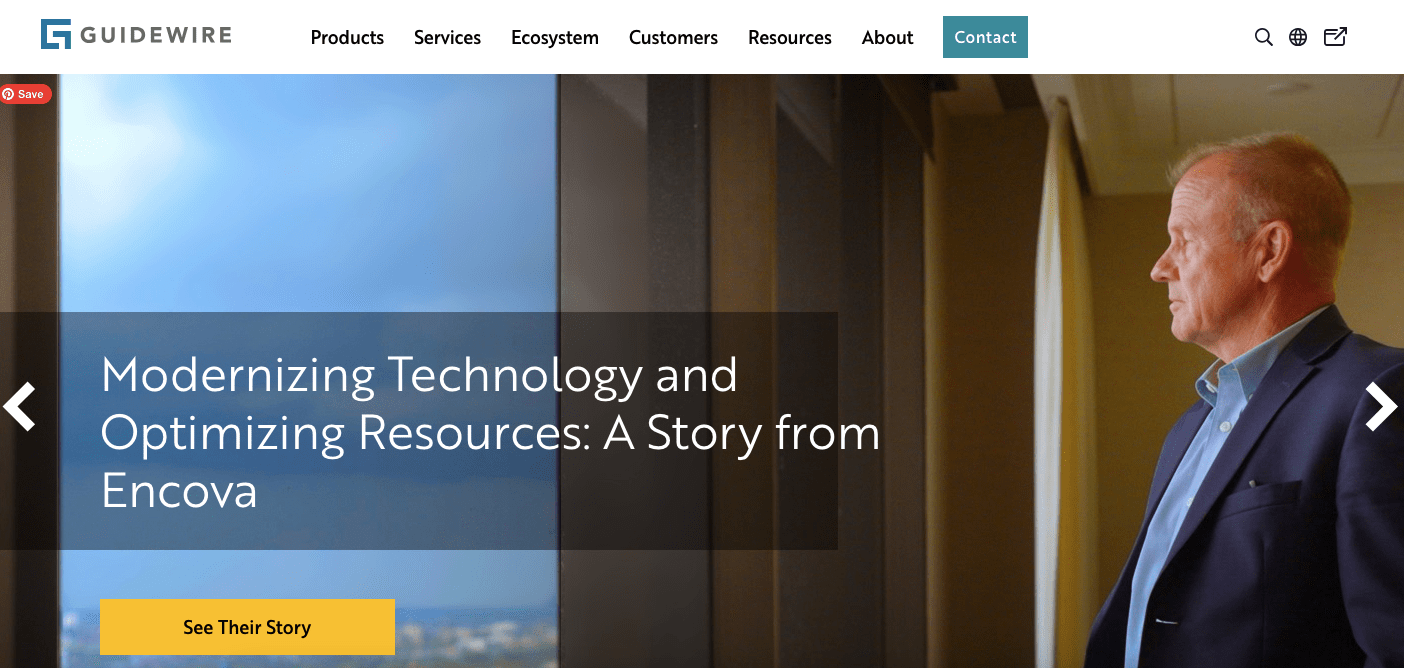
Guidewire Underwriting Management helps insurers establish and enforce underwriting best practices and automate manual tasks. With features that support the entire lifecycle of underwriting, Guidewire is a great choice for insurers focused on increasing productivity and making more strategic decisions.
Top 5 Features:
- Streamlined underwriting process
- Best practice enforcement
- Automation of manual tasks
- Lifecycle underwriting support
- Detailed analytics and reporting
Five Benefits:
- Increases productivity
- Improves decision-making
- Reduces operational costs
- Improves compliance
- Facilitates strategic planning
Two Cons:
- Requires significant investment
- Training needed for optimal use
Best For: Insurers looking for a robust system to automate their underwriting processes and improve decision-making and operational efficiency.
13. Guidewire PolicyCenter
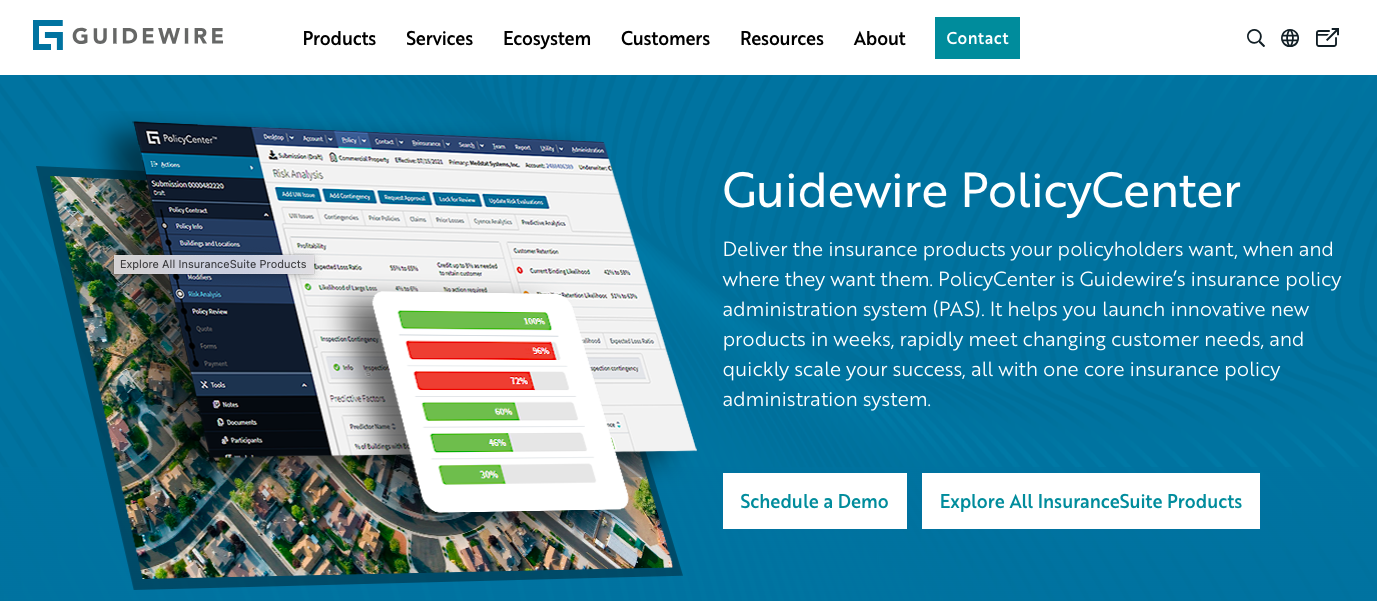
Guidewire PolicyCenter is tailored for property and casualty insurers who value efficiency and agility. It focuses on optimizing underwriting workflows and product management.
Top 5 Features:
- Optimized underwriting workflows
- Agile policy management
- Comprehensive product management
- Integration with Guidewire suite
- User-friendly interface
Five Benefits:
- Improves efficiency and agility
- Reduces time-to-market
- Improves customer satisfaction
- Streamlines policy management
- Supports business growth
Two Cons:
- High implementation cost
- Requires integration with other systems
Best For: Property and casualty insurers seeking a complete system for agile policy management and underwriting.
14. QQWebRater
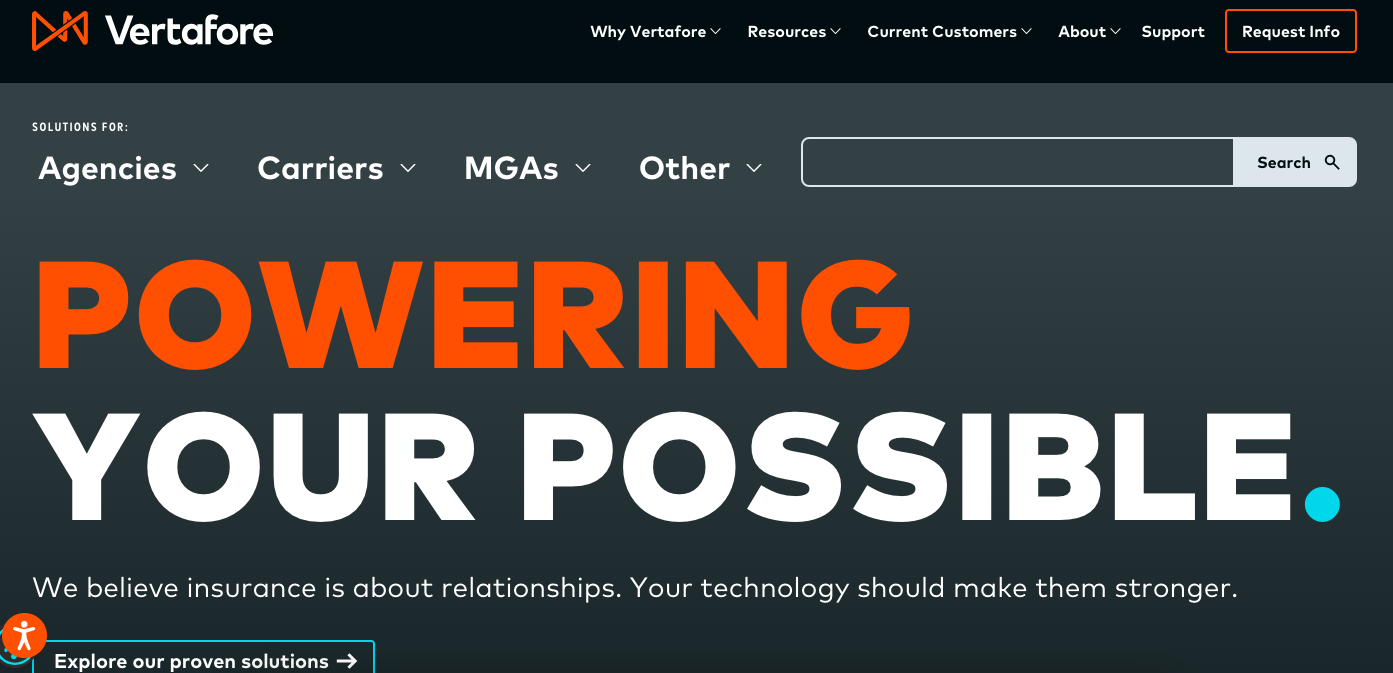
QQWebRater by Vertafore is a user-friendly, web-based platform dedicated to auto insurance rating. Established in 1969 in Denver, this tool's design allows for effortless access and prioritizes user convenience. Integration abilities with management systems and carriers make QQWebRater a favorable solution for seamless processes.
Top 5 Features:
- Web-based platform
- Auto insurance rating specialization
- Integration with management systems
- Real-time quoting
- User-friendly interface
Five Benefits:
- Improves accessibility and convenience
- Reduces quoting time
- Improves accuracy of quotes
- Integrates seamlessly with existing systems
- Streamlines operational efficiency
Two Cons:
- Limited to auto insurance
- Dependence on Internet connectivity
Best For: Auto insurance agencies looking for a streamlined rating solution that integrates easily with existing systems and improves operational efficiency.
15. Origami Risk Insurance and Risk Management Solutions

Origami Risk is a highly customizable SaaS platform designed for insurance, risk management, and compliance. It streamlines underwriting and claims administration tasks with a strong emphasis on automation and centralization. Origami Risk specializes in providing robust analytical tools and advanced risk management solutions.
Top 5 Features:
- Customizable SaaS platform
- Advanced analytics and reporting
- Integrated risk management tools
- Automated underwriting and claims administration
- Centralized data repository
Five Benefits:
- Improves operational efficiency with automation
- Improves risk control with comprehensive analytics
- Streamlines claims and underwriting processes
- Centralizes data for better accessibility and management
- Scalable solution for growing organizations
Two Cons:
- May require significant customization for specific needs
- Higher cost for small organizations
Best For: Insurance entities and risk-focused organizations aiming to consolidate their risk management operations on a single, efficient, and analytics-driven platform.
16. Earnix
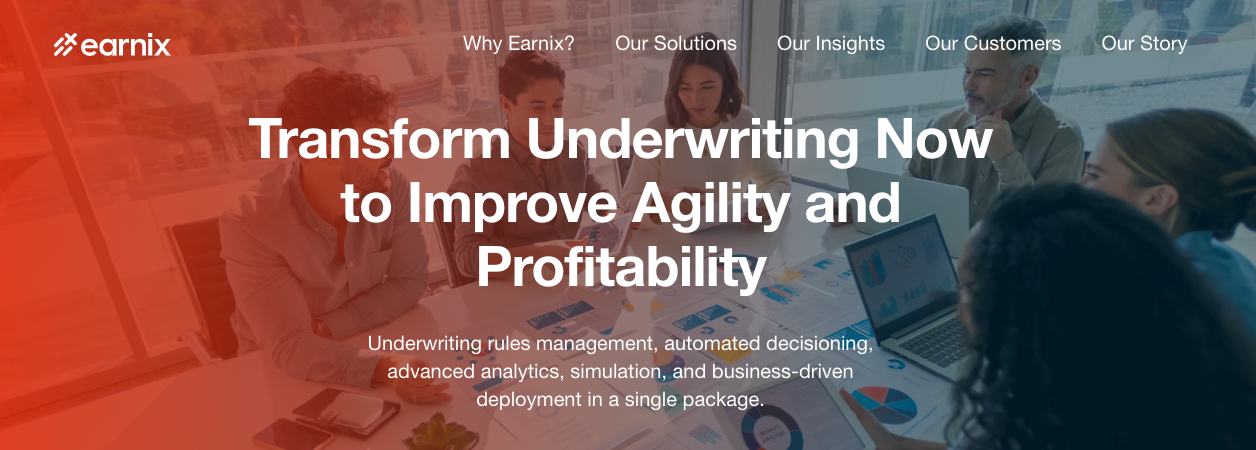
Earnix offers mission-critical systems, especially for banks and insurers. With expertise in predictive analytics and risk modeling, this robust platform aims to align business objectives with market dynamics. Leading financial institutions use Earnix to deliver over a billion quotes per year.
Top 5 Features:
- Predictive analytics
- Risk modeling
- Personalized product offerings
- Real-time pricing optimization
- Market dynamics alignment
Five Benefits:
- Improves pricing strategy effectiveness
- Improves product personalization
- Speeds up decision-making with real-time data
- Aligns business objectives with market trends
- Supports large-scale quote generation
Two Cons:
- High initial setup cost
- Requires continuous data management
Best For: Larger insurers and financial institutions focused on optimizing their pricing strategies and product personalization through sophisticated analytics and modeling.
17. Xemplar Auto
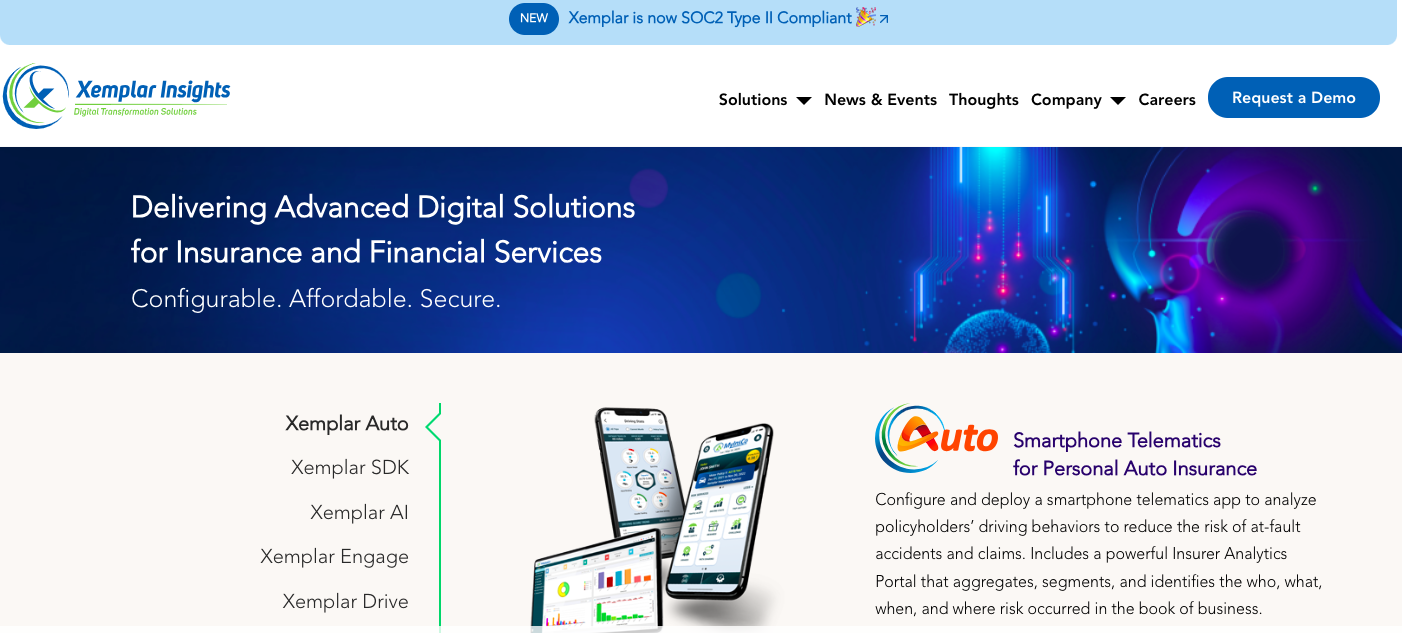
Xemplar Auto offers a white-labeled mobile app solution for Standard, Non-Standard, and Preferred Personal Auto Insurers. It combines digital policy services with smartphone-based telematics features for driver safety assessment and targeted risk management. Xemplar Auto provides Business Intelligence (BI) reports for risk exposure analysis, making it an invaluable asset for carriers focused on leveraging data-driven insights.
Top 5 Features:
- White-labeled mobile app
- Smartphone-based telematics
- Digital policy services
- Driver safety assessment
- Business Intelligence (BI) reports
Five Benefits:
- Modernizes auto insurance experience
- Improves real-time risk assessment
- Improves driver safety and engagement
- Provides valuable BI insights
- Customizable to the insurer’s brand
Two Cons:
- Limited to the auto insurance sector
- Initial setup can be resource-intensive
Best For: Auto insurers aiming to integrate advanced telematics for real-time risk assessment. It is also a good choice for those looking to engage policyholders through a digital platform cohesively aligned with their brand.
18. Akur8
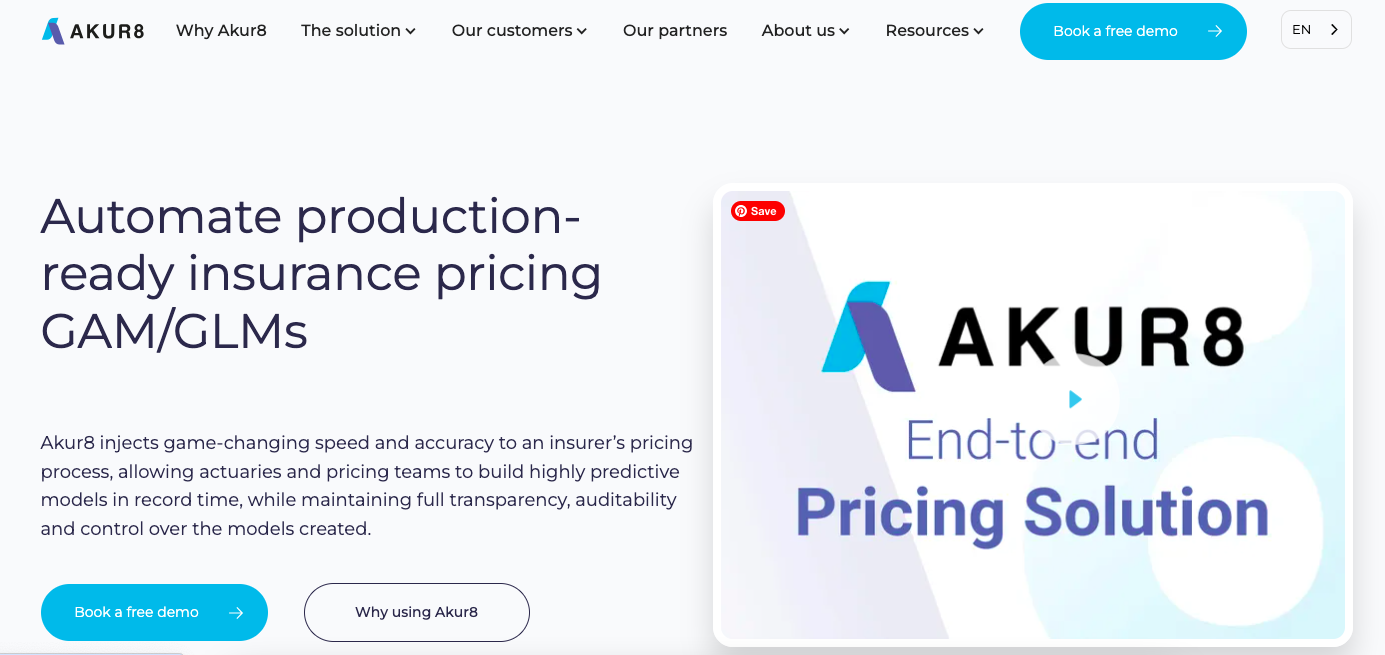
Akur8 is revolutionizing the insurance space with its proprietary AI-driven rate-making platform. It balances speed and accuracy, providing a significant edge over traditional pricing methods. The company's dedication to innovation and the advancement of actuarial science has positioned it as a key player for insurers ready to embrace digital transformation in pricing.
Top 5 Features:
- AI-driven rate-making
- Advanced pricing models
- Speed and accuracy in pricing
- Transparent model control
- Real-time pricing adjustments
Five Benefits:
- Improves pricing speed and accuracy
- Provides a competitive edge with AI
- Reduces time to market for pricing updates
- Maintains transparency and control
- Supports digital transformation in pricing
Two Cons:
- High initial investment
- Requires expertise in AI and data management
Best For: Insurance companies keen on leveraging AI for state-of-the-art rate-making. It’s especially suitable for those aiming to fast-track their pricing processes without compromising on transparency or control.
19. Ratabase
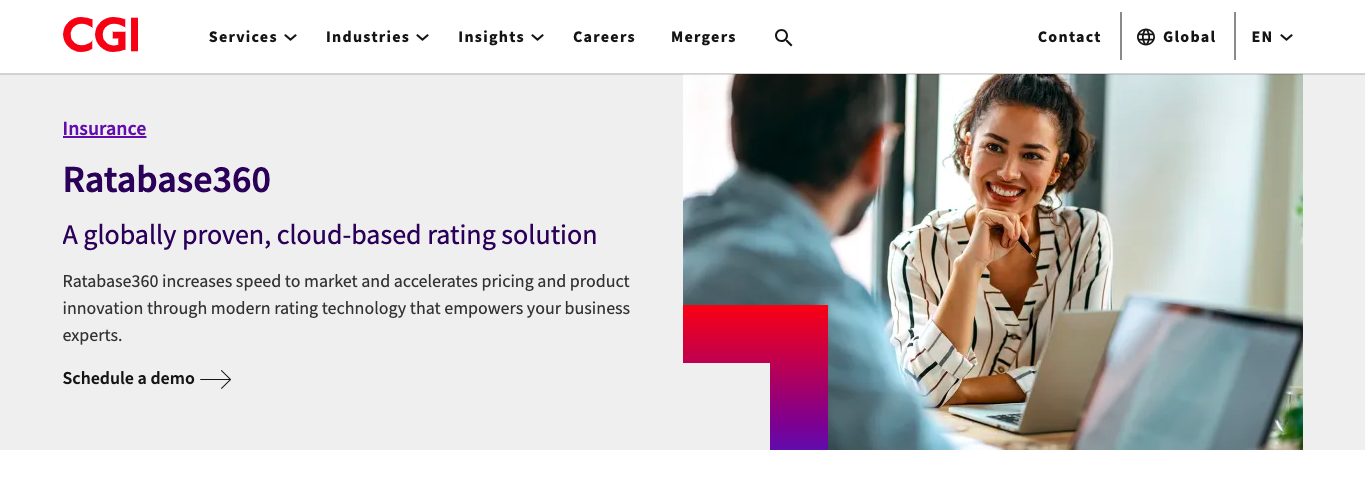
Ratabase is known for its functionality, which empowers carriers to deploy complex rating programs and product segmentation swiftly and cost-effectively. It is a go-to choice for insurers seeking both well-established software with a proven track record and the ability to scale up as needed.
Top 5 Features:
- Complex rating program management
- Product segmentation capabilities
- Fast deployment of rating programs
- Scalability for growing businesses
- Proven track record
Five Benefits:
- Efficient management of complex rates
- Supports rapid product segmentation
- Reduces time-to-market for new rates
- Scales with business growth
- Trusted solution with a proven track record
Two Cons:
- Requires significant customization for unique needs
- Higher cost for comprehensive features
Best For: Insurance carriers seeking rating and underwriting software that can easily manage complex programs.
20. Radar Live

Willis Towers Watson Radar Live delivers a robust rating and rules engine that helps insurers make swift and accurate pricing decisions. It equips users with tools to compete effectively in the rapidly changing property and casualty (P&C) insurance market. This platform stands out for its deep analytics powered by real-time capabilities, setting the standard for underwriting efficiency and sophisticated risk modeling.
Top 5 Features:
- Robust rating and rules engine
- Real-time analytics
- Flexible underwriting capabilities
- Comprehensive risk modeling
- Integration with existing systems
Five Benefits:
- Increases decision-making speed
- Improves pricing accuracy
- Supports competitive positioning
- Facilitates real-time data analysis
- Adaptable to market changes
Two Cons:
- Requires ongoing data management
- Higher cost for advanced analytics features
Best For: Property and casualty insurers aiming to capitalize on advanced real-time analytics and flexible underwriting.
21. AIM
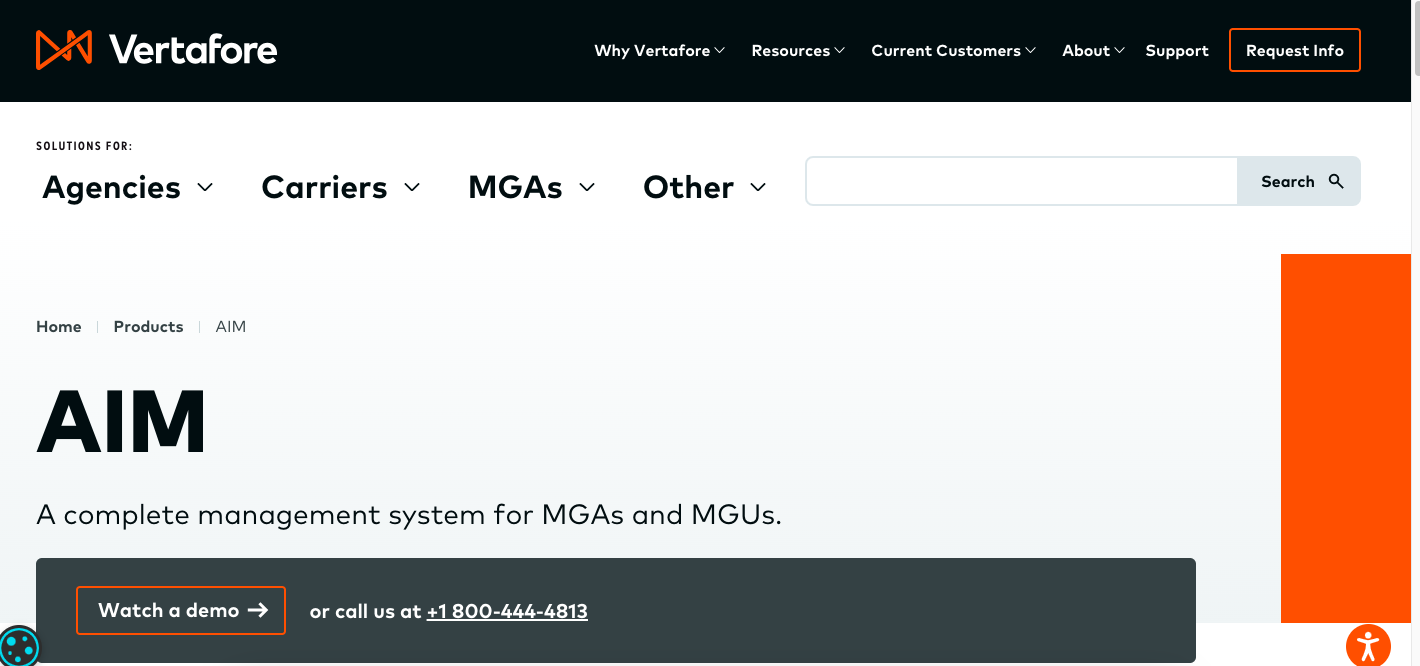
AIM centralizes underwriting, accounting, and claims operations to Improve efficiency and profitability. It focuses on managing the full policy lifecycle, helping insurers speed up market entry while maintaining accuracy. Specializing in InsurTech, AIM brings disparate processes together into a cohesive system.
Top 5 Features:
- Centralized underwriting, accounting, and claims operations
- Full policy lifecycle management
- Improved integration capabilities
- Robust reporting and analytics
- Automation of repetitive tasks
Five Benefits:
- Increases efficiency through centralization
- Improves profitability with accurate data management
- Speeds up market entry
- Reduces operational redundancies
- Provides comprehensive visibility into operations
Two Cons:
- May require substantial training for users
- Potentially high implementation costs
Best For: Insurance businesses of all sizes seeking to modernize and integrate their underwriting, accounting, and claims operations.
22. PL Rating
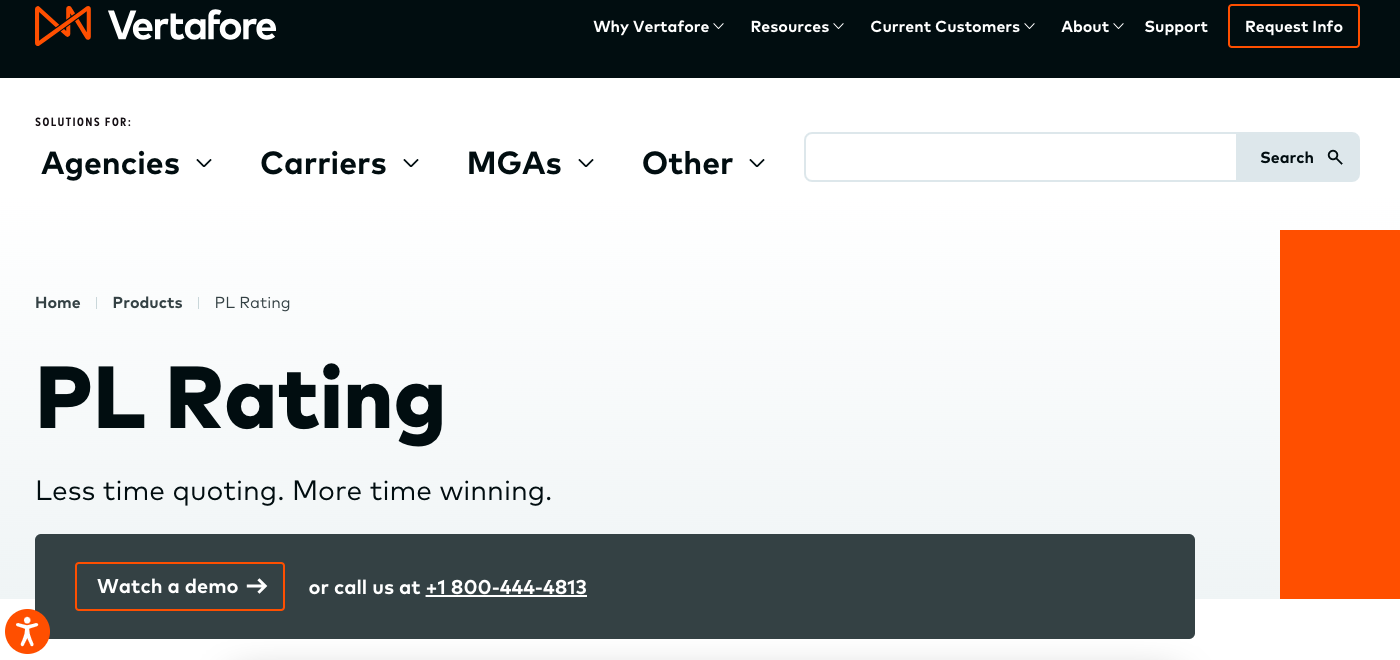
PL Rating by Vertafore enables agents to offer multiple competitive quotes efficiently. This solution is integral for agencies that prioritize driving productivity and profitability through advanced technology and end-to-end connectivity.
Top 5 Features:
- Comparative rating solutions
- Integration with multiple carriers
- Real-time quote generation
- Improved client-agent interaction tools
- Workflow streamlining features
Five Benefits:
- Improves quote efficiency
- Strengthens client relationships
- Increases agent productivity
- Offers competitive quotes quickly
- Improves profitability
Two Cons:
- Dependent on carrier integrations
- May have a learning curve for new users
Best For: Independent insurance agencies that value a robust, user-friendly platform to offer competitive quotes and streamline their workflow.
23. SmartRater

SmartRater stands out with its robust Rating and Billing Management System (RBMS). It combines product configurability with precision in rating to address the diverse needs of insurers. With a focus on improving the efficiency of rate determination and billing, SmartRater is an exemplar of innovation that can drive success in the insurance software industry.
Top 5 Features:
- Rating and Billing Management System (RBMS)
- High configurability
- Precision in rate determination
- Integrated billing system
- Advanced product configurability
Five Benefits:
- Optimizes underwriting efficiency
- Ensures billing accuracy
- Improves rate determination speed
- Supports diverse insurance products
- Improves market responsiveness
Two Cons:
- May require extensive customization
- Higher costs for advanced features
Best For: Insurance companies with a focus on integrating their rating and billing systems.
24. Uncharted
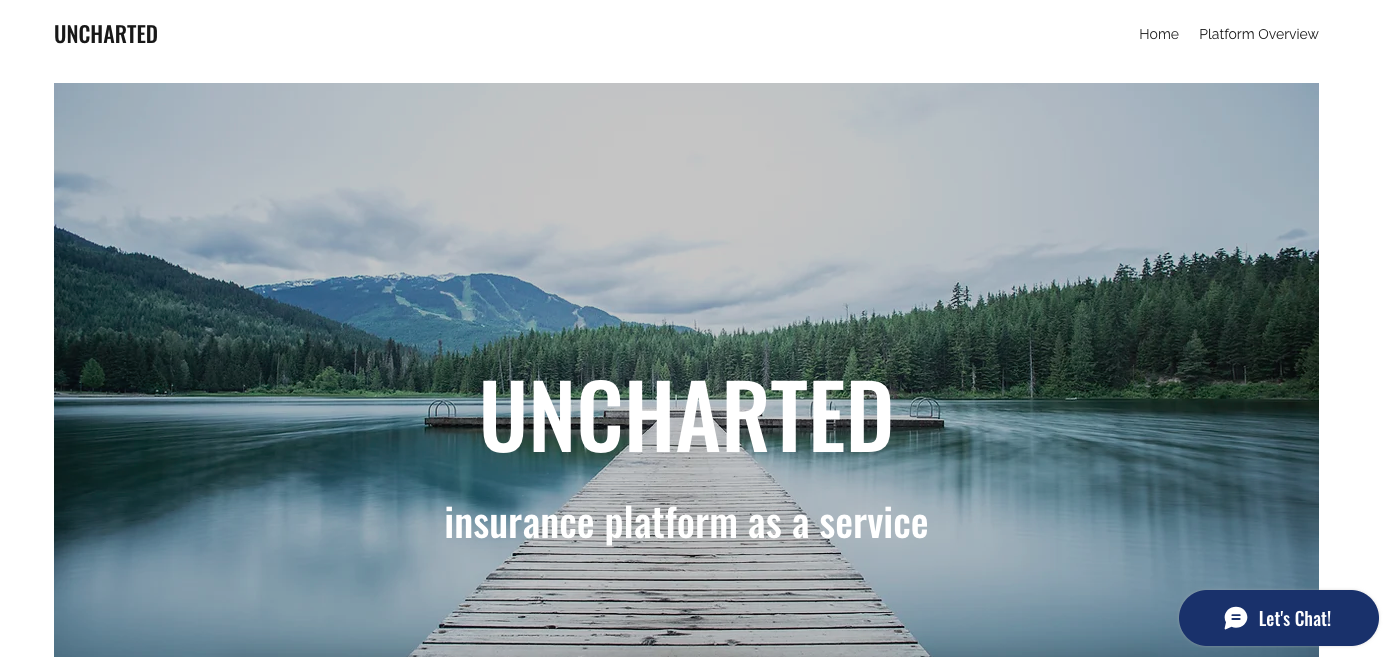
Uncharted offers a powerful digital experience for purchasing and managing extended warranty products. The company strategically uses data analysis and innovative technologies like OCR (Optical Character Recognition) to improve user experience. Known for delivering seamless solutions for subscription-based models and extensive claims tracking, Uncharted is ideal for navigating warranty programs, especially across Asia-Pacific markets.
Top 5 Features:
- Digital experience for warranty products
- OCR (Optical Character Recognition) technology
- Seamless subscription model integration
- Extensive claims tracking
- Data analysis for user experience Improvement
Five Benefits:
- Improves user experience
- Streamlines warranty management
- Improves claims processing efficiency
- Supports subscription-based models
- Increases market reach in Asia-Pacific
Two Cons:
- Limited to warranty products
- Potential high initial investment
Best For: Global brokers and consumer electronics giants that need to streamline extended warranty underwriting and claims processing across various regions.
25. UnderwriteMe

UnderwriteMe unites insurers, intermediaries, and customers in a unique marketplace. Its platform is built to overhaul the traditional life insurance application journey. It champions the move from commonly cumbersome processes to a quicker, more customer-friendly approach, using its Underwriting Engine and Protection Platform.
Top 5 Features:
- Unique marketplace for insurers and intermediaries
- Automated underwriting engine
- Protection Platform
- Customer-centric application process
- Real-time data integration
Five Benefits:
- Speeds up life insurance applications
- Improves user experience
- Reduces underwriting costs
- Improves application accuracy
- Streamlines communication between stakeholders
Two Cons:
- Primarily focused on life insurance
- May require integration with existing systems
Best For: Insurance providers and brokers in the life insurance sector committed to transforming their underwriting process.
26. PCS Corporate Actions
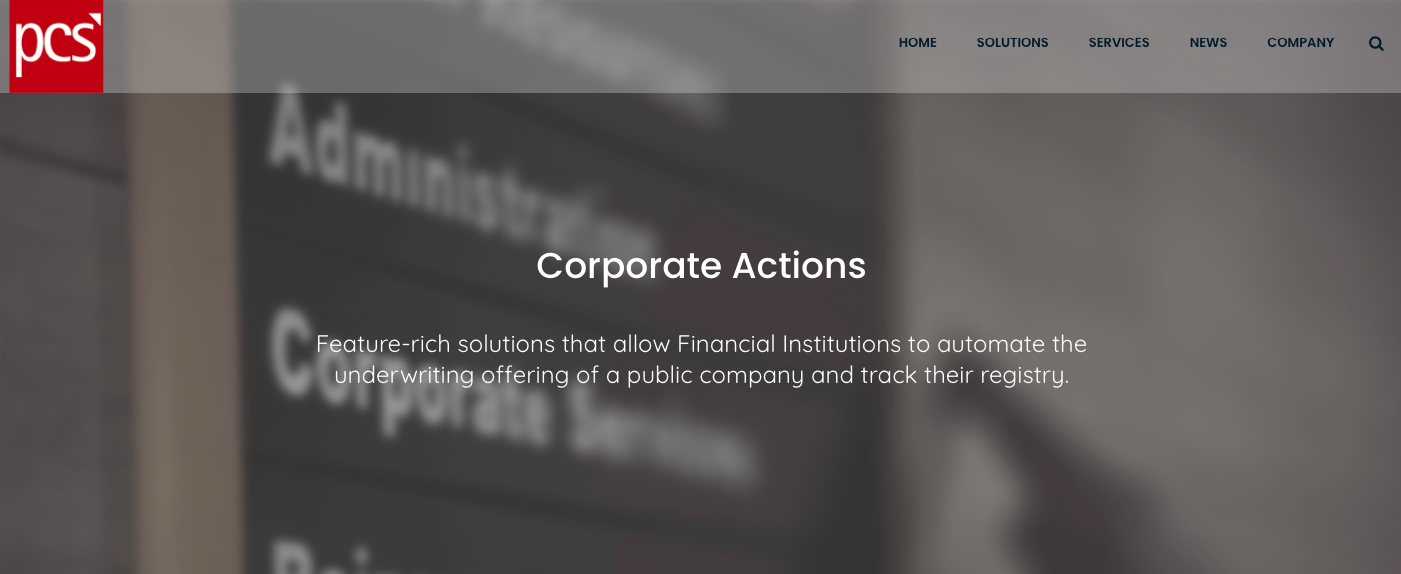
PCS (Professional Computer Services S.A.) provides cutting-edge solutions for financial institutions. This includes customizable modules to automate the management of corporate actions. PCS specializes in software that caters to the demanding needs of the financial sector. It is especially suited for fund management, private banking, and asset management. Their corporate actions solution tracks and comprehensively reports on dividend payments, stock splits, and other corporate events that can impact underwriting offerings for a public company.
Top 5 Features:
- Customizable automation modules
- Comprehensive corporate actions management
- Real-time tracking of corporate events
- Detailed reporting capabilities
- Integration with financial systems
Five Benefits:
- Automates complex corporate actions
- Reduces manual errors
- Improves data accuracy
- Provides timely updates on corporate events
- Improves decision-making for underwriters
Two Cons:
- May require significant customization
- Higher initial implementation costs
Best For: Financial institutions and underwriters specializing in corporate finance who need to automate and manage their underwriting operations.
27. Newgen
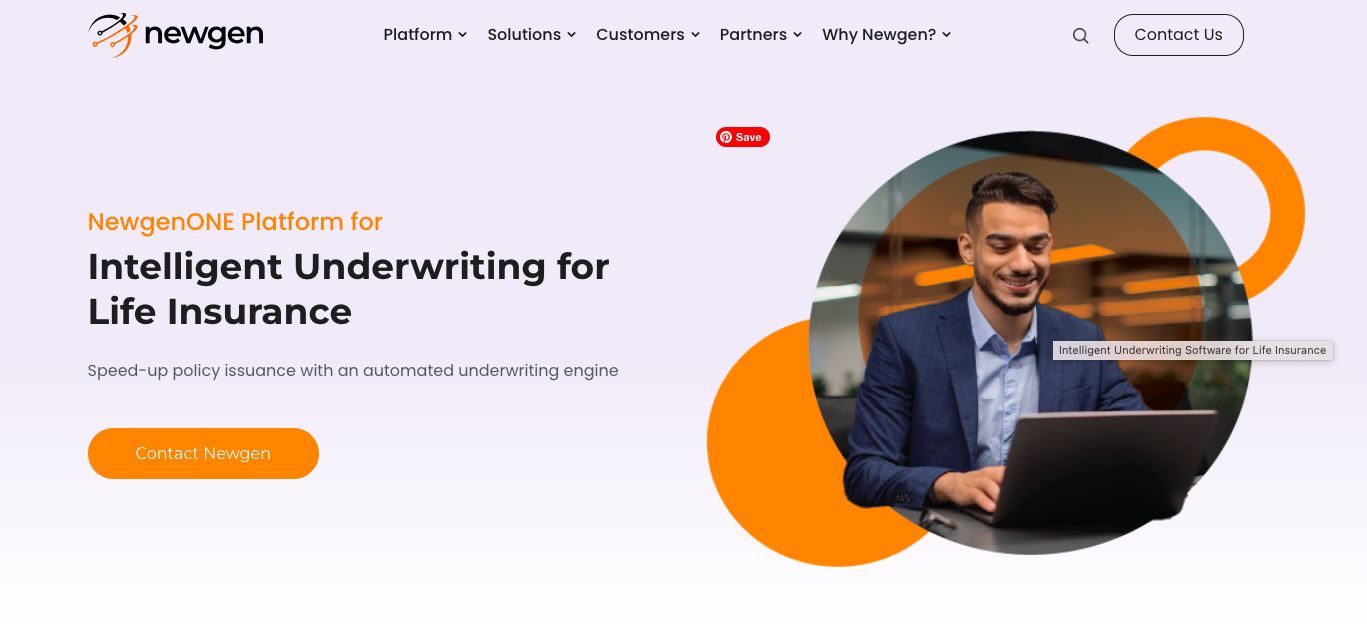
Newgen offers a comprehensive solution for managing the complete underwriting lifecycle. It helps insurance companies streamline processes, improve accuracy, and Improve productivity with its advanced automation and workflow capabilities.
Top 5 Features:
- Automated workflow management
- Real-time collaboration tools
- Advanced data analytics
- Customizable underwriting rules engine
- Integration with existing systems
Five Benefits:
- Increases efficiency with automated workflows
- Improves decision-making with advanced analytics
- Reduces errors through customizable rules
- Improves team collaboration with real-time tools
- Seamlessly integrates with current systems
Two Cons:
- May require extensive training for new users
- Initial setup can be time-consuming
Best For: Insurance companies seeking a robust, automated solution to streamline their underwriting processes and improve accuracy and productivity.
28. LifePipe
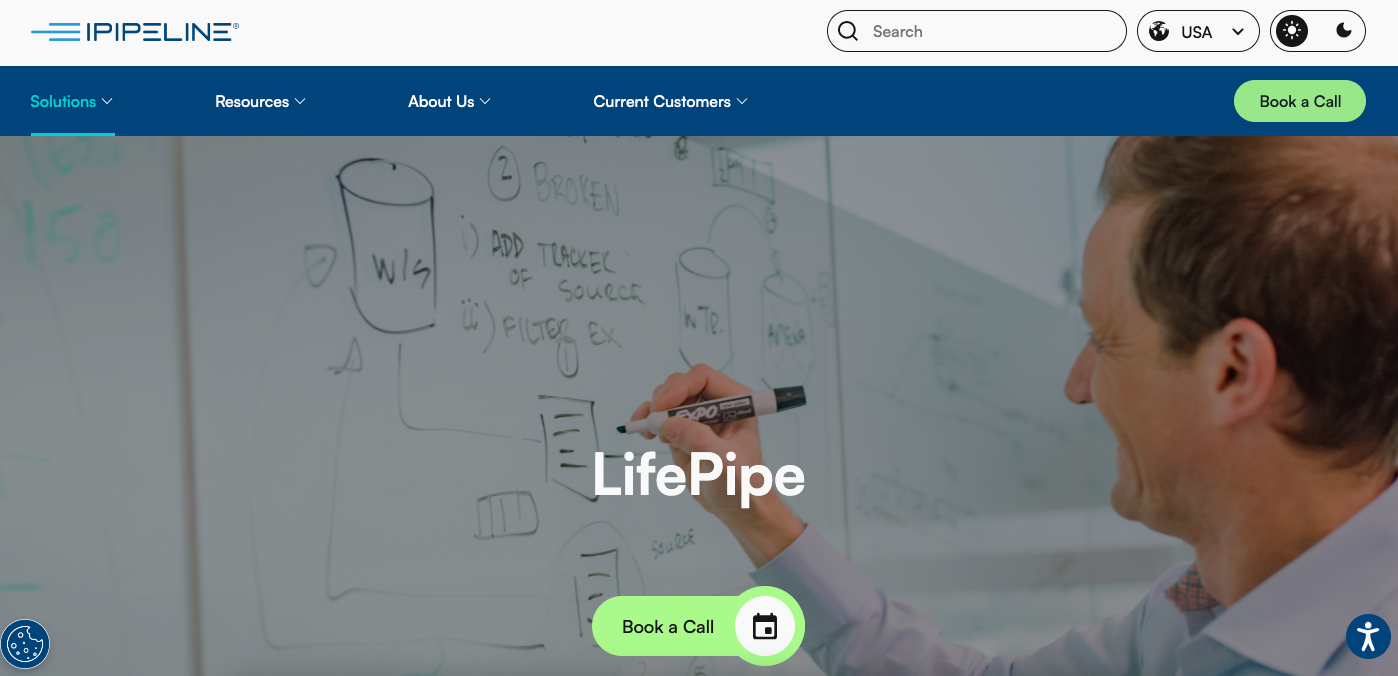
LifePipe simplifies the way you and your producers approach the life insurance market. Through LifePipe, users gain access to rates, information, and forms needed to market, sell, and transact life insurance. It's known for its cloud-based software solutions aimed at transforming the policy lifecycle at every stage with location-based strategies.
Top 5 Features:
- Cloud-based life insurance solutions
- Rate comparison tools
- Integrated forms and documentation
- Sales and marketing support
- Automated policy processing
Five Benefits:
- Simplifies the life insurance sales process
- Improves producer productivity
- Provides accurate rate comparisons
- Improves document management
- Speeds up policy issuance
Two Cons:
- Primarily focused on life insurance
- Requires internet access for full functionality
Best For: Insurance agents and agencies focusing on the life insurance sector and looking for a comprehensive system to optimize their sales process.
29. Product Builder

Comtec, a prominent player in the insurance software industry, offers a unique tool known as Product Builder. It is tailored to aid in designing and configuring innovative insurance policies. This tool stands out for its adaptability, meeting the high flexibility demands of the insurance market.
Top 5 Features:
- Flexible policy design tools
- Product configurability
- Automation of policy creation
- Integration with underwriting systems
- Real-time product updates
Five Benefits:
- Improves policy design flexibility
- Speeds up product development
- Improves underwriting accuracy
- Facilitates rapid market response
- Supports diverse insurance products
Two Cons:
- May require significant customization
- Higher cost for advanced features
Best For: Insurance companies focusing on uniqueness and quick market response times.
30. Duck Creek Rating
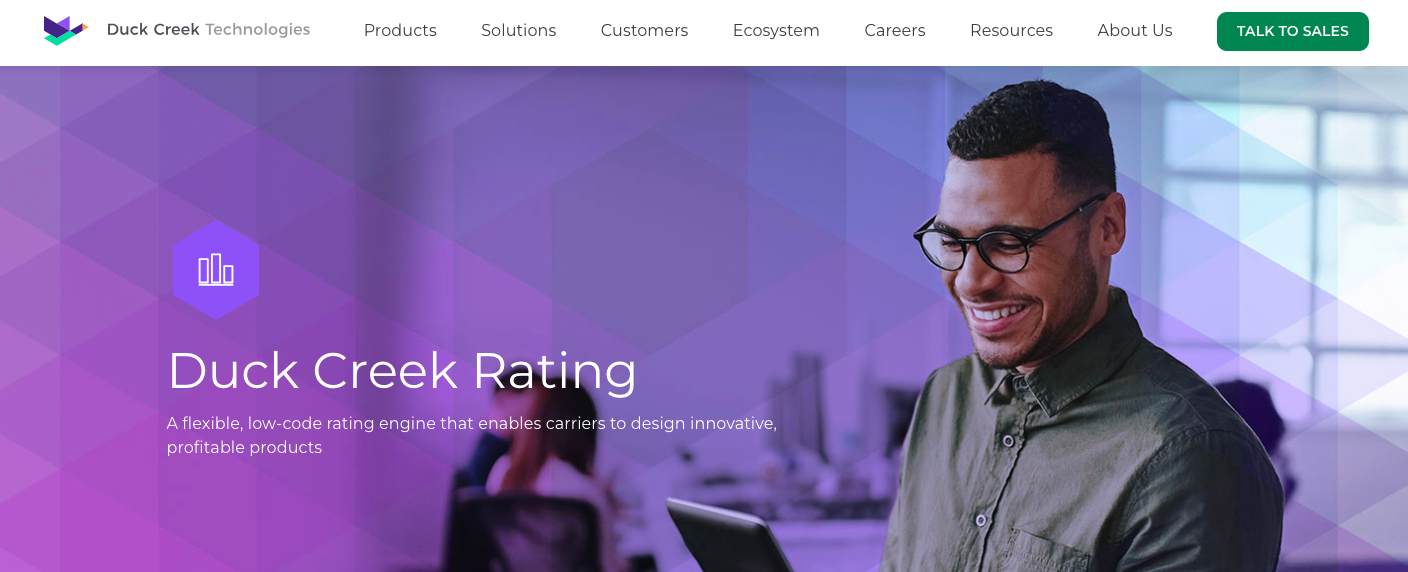
Duck Creek Rating provides insurers with precision in pricing insurance products. It specializes in Distribution Management and Reinsurance Management. Their advanced rating engine is a staple for property and casualty insurance carriers who require a reliable tool that integrates seamlessly with existing systems.
Top 5 Features:
- Advanced rating engine
- Integration with existing systems
- Precision pricing tools
- Real-time rate adjustments
- Compliance management
Five Benefits:
- Improves pricing accuracy
- Improves underwriting efficiency
- Reduces time-to-market for new rates
- Ensures regulatory compliance
- Integrates seamlessly with other systems
Two Cons:
- Higher initial investment
- Requires ongoing data management
Best For: Property and casualty insurers seeking a rating system that provides consistency and accuracy in pricing.
31. The Policy Processor
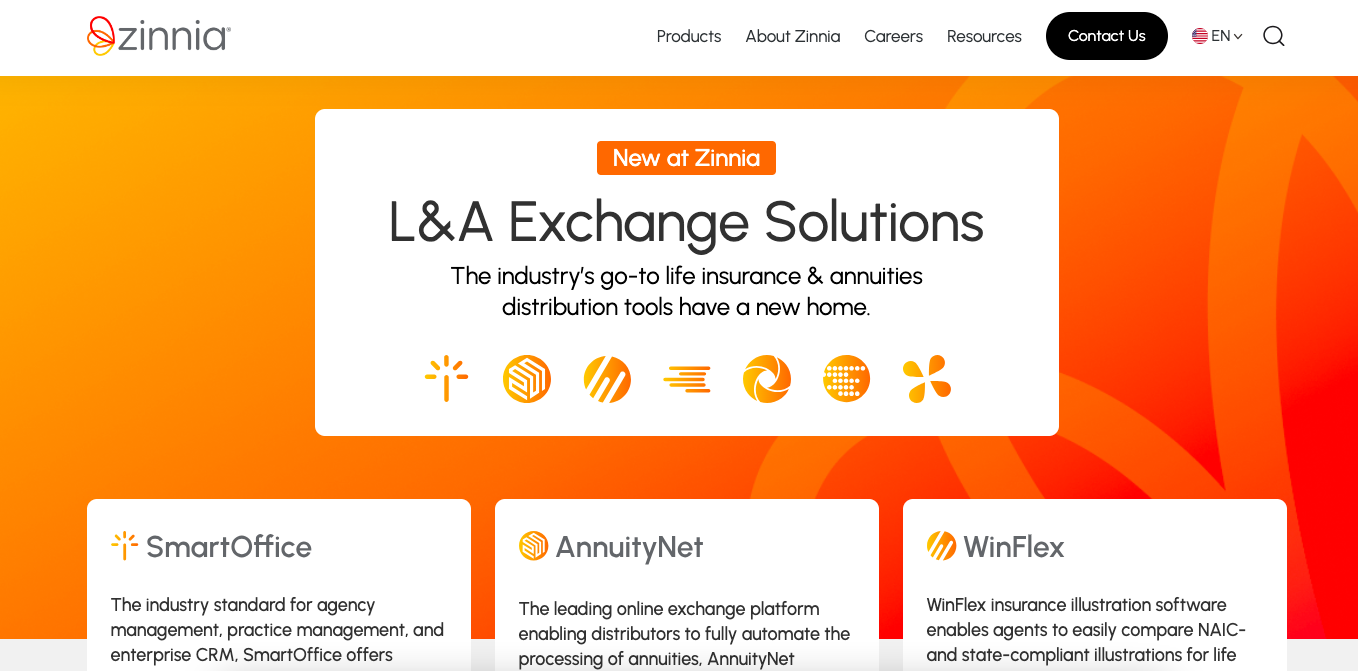
The Policy Processor™ delivers advanced and comprehensive solutions for life insurance new business processing and underwriting. It offers a robust system that supports all life insurance products across various distribution channels. It specializes in insurance carrier systems, certificate management, and risk management.
Top 5 Features:
- Comprehensive policy processing
- Integrated underwriting tools
- Certificate management
- Risk management modules
- Support for all life insurance products
Five Benefits:
- Streamlines policy processing
- Improves underwriting accuracy
- Improves risk management
- Supports complex product lines
- Increases operational efficiency
Two Cons:
- Primarily focused on life insurance
- May require substantial customization
Best For: Large life insurance companies that need a sophisticated system that can cater to the complexities of their product lines and distribution networks.
32. Briza
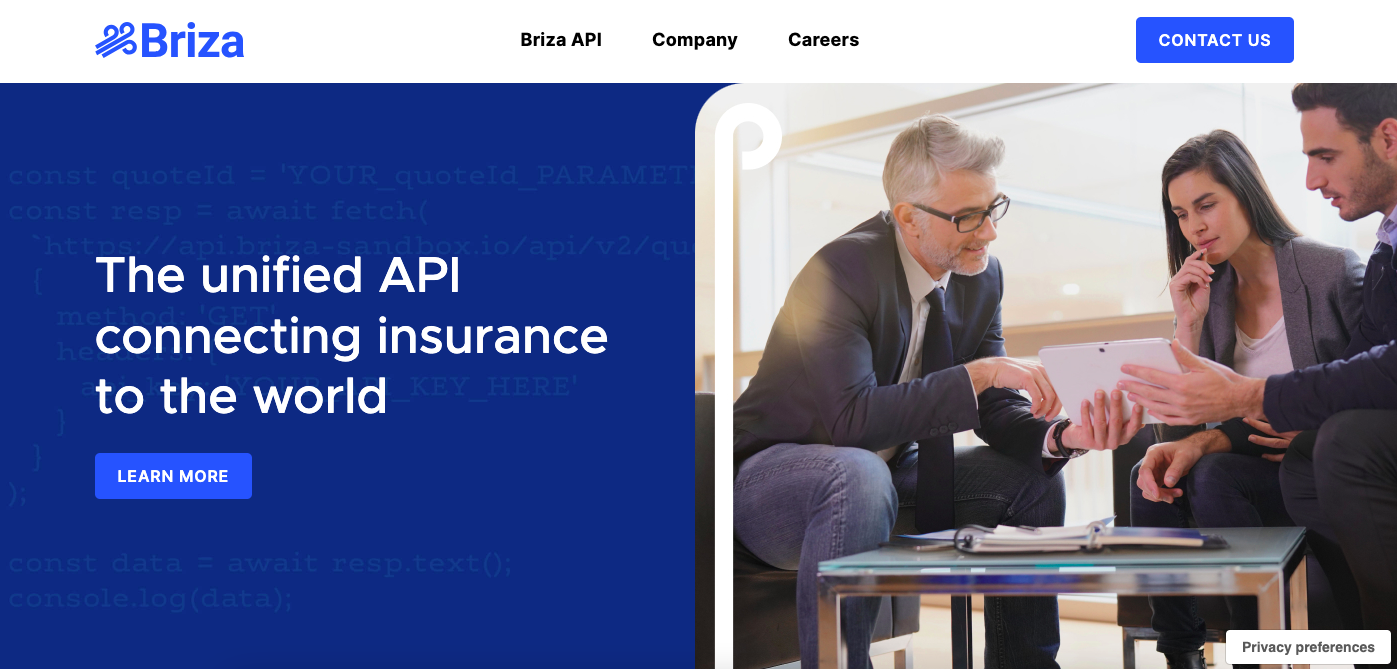
Briza is a cutting-edge API that brings commercial insurance underwriting into the modern age. It empowers agencies and carriers with a tool that seamlessly connects them to underwriters, providing real-time quotes, binding, and payment processing. Briza is committed to making small business insurance policies more accessible and manageable, specializing in the digital transformation of commercial insurance distribution.
Top 5 Features:
- Advanced API for real-time quotes
- Seamless binding and payment processing
- Integration with underwriting systems
- Digital transformation support
- User-friendly interface
Five Benefits:
- Speeds up the quote-to-bind process
- Improves customer experience
- Improves operational efficiency
- Reduces administrative burden
- Supports small business insurance needs
Two Cons:
- Primarily focused on small business insurance
- May require integration with existing systems
Best For: Insurance agencies and underwriters focused on the small business segment. It is great for organizations looking to integrate advanced digital solutions for quote-to-bind efficiency and better customer experiences.
33. LexisNexis Data Prefill
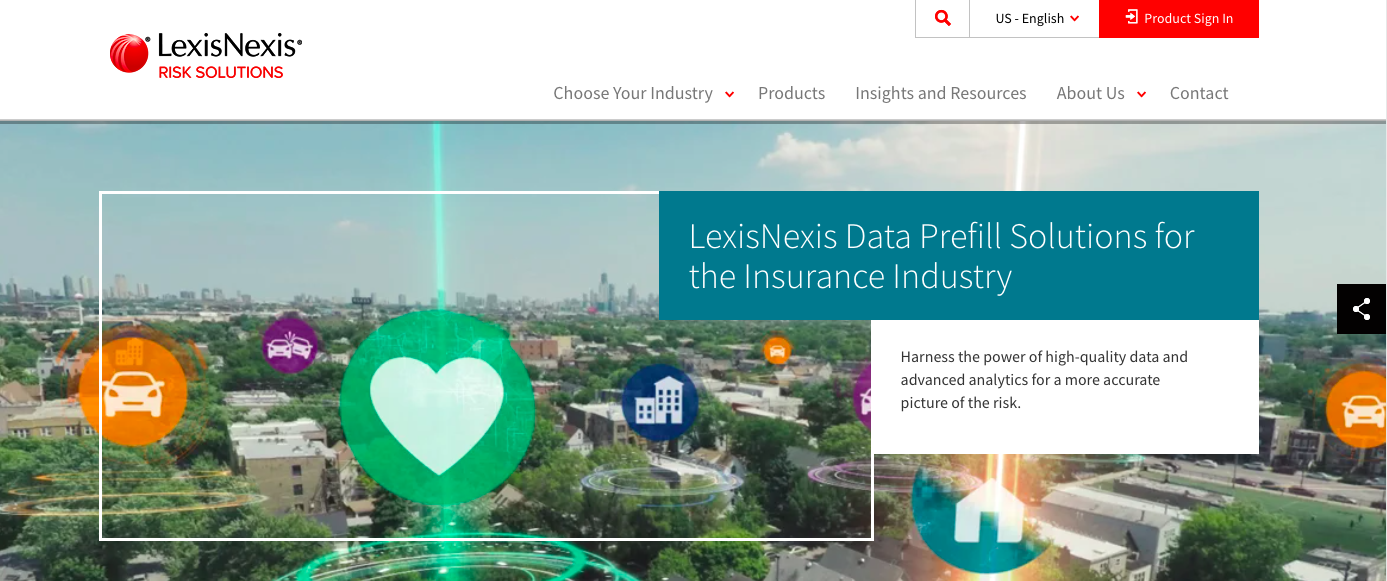
Data Prefill leverages vast databases to automatically fill in customer information, thus optimizing the insurance application process. It's designed to prefill application forms with verifiable data, reducing the manual input needed. LexisNexis Risk Solutions harnesses the power of data and advanced analytics to help businesses make informed decisions.
Top 5 Features:
- Automatic data prefill
- Vast database access
- Real-time data verification
- Integration with underwriting systems
- Improved data accuracy
Five Benefits:
- Speeds up application processes
- Reduces manual data entry
- Improves data accuracy
- Improves customer experience
- Supports underwriting efficiency
Two Cons:
- Dependent on data quality
- Requires integration with existing systems
Best For: Insurers looking to modernize their application process with data-driven automation.
34. LexisNexis Current Carrier
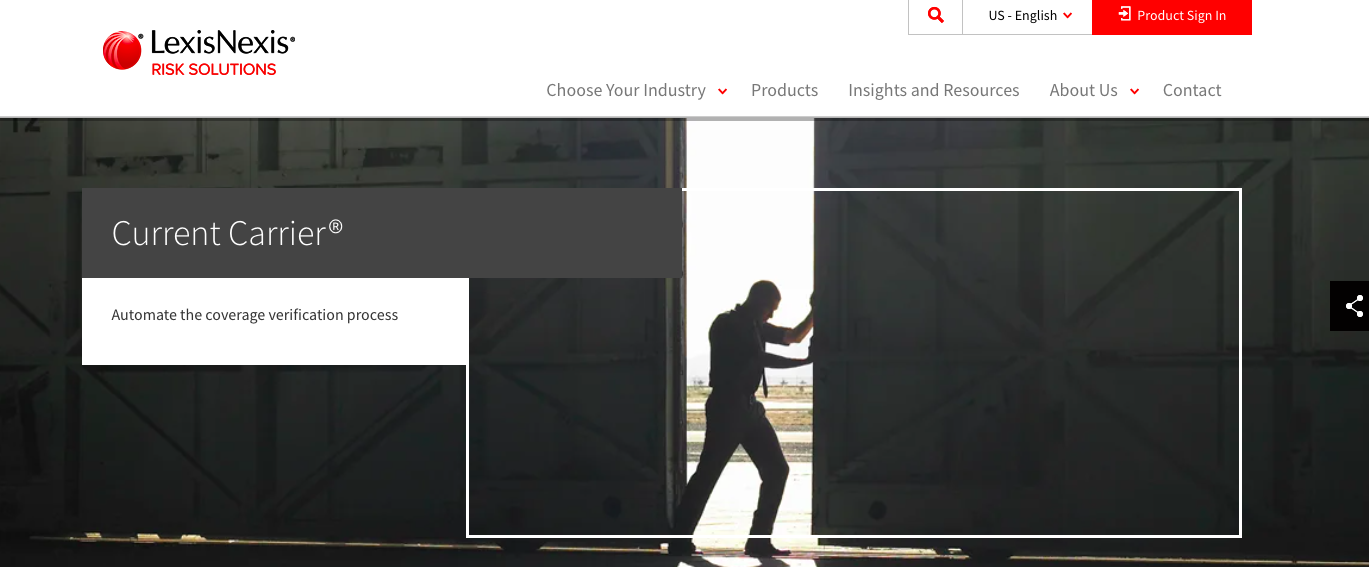
Current Carrier provides real-time insights into existing insurance coverages. The platform empowers underwriters with instant access to an expansive database of insurance policy data. This solution is pivotal for verifying coverage history, streamlining underwriting, and preventing fraud.
Top 5 Features:
- Real-time insurance coverage insights
- Expansive policy data access
- Fraud prevention tools
- Integration with underwriting systems
- Detailed coverage history
Five Benefits:
- Improves risk assessment
- Prevents insurance fraud
- Improves underwriting accuracy
- Speeds up policy verification
- Supports informed decision-making
Two Cons:
- Dependent on data quality
- May require integration with existing systems
Best For: Damage prevention-focused insurers who require current and historical insurance coverage details to ensure accurate risk assessment and prevent fraud.
35. OneShield Rating
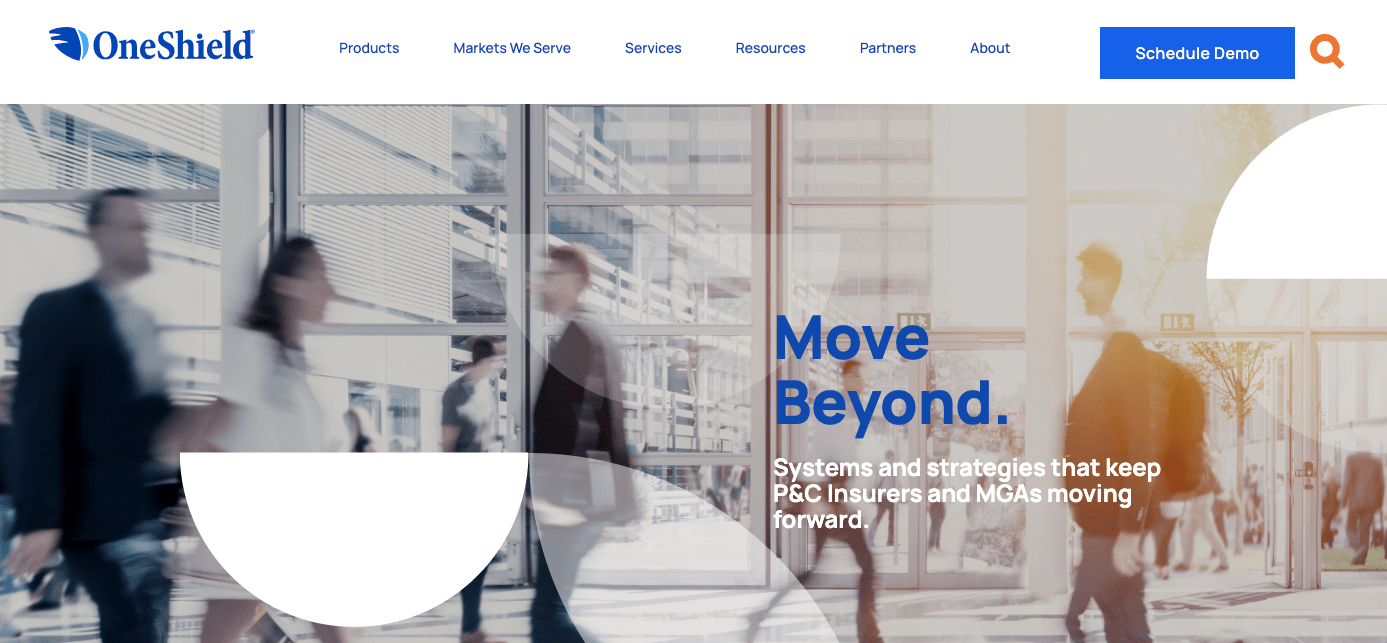
OneShield Software helps insurers optimize their pricing strategies. With its enterprise-grade Rating Engine, insurers can create, launch, and modify complex tariff structures. OneShield has specialized in providing software solutions to insurers to streamline underwriting and maximize profitability.
Top 5 Features:
- Enterprise-grade rating engine
- Flexible tariff structures
- Real-time rate adjustments
- Integration with existing systems
- Compliance management
Five Benefits:
- Improves pricing strategy
- Improves underwriting accuracy
- Reduces time-to-market for new rates
- Ensures regulatory compliance
- Adapts to market changes
Two Cons:
- Higher initial investment
- Requires ongoing data management
Best For: Insurance carriers looking for a flexible and robust rating solution to innovate and optimize their pricing strategies.
36. CD Rating
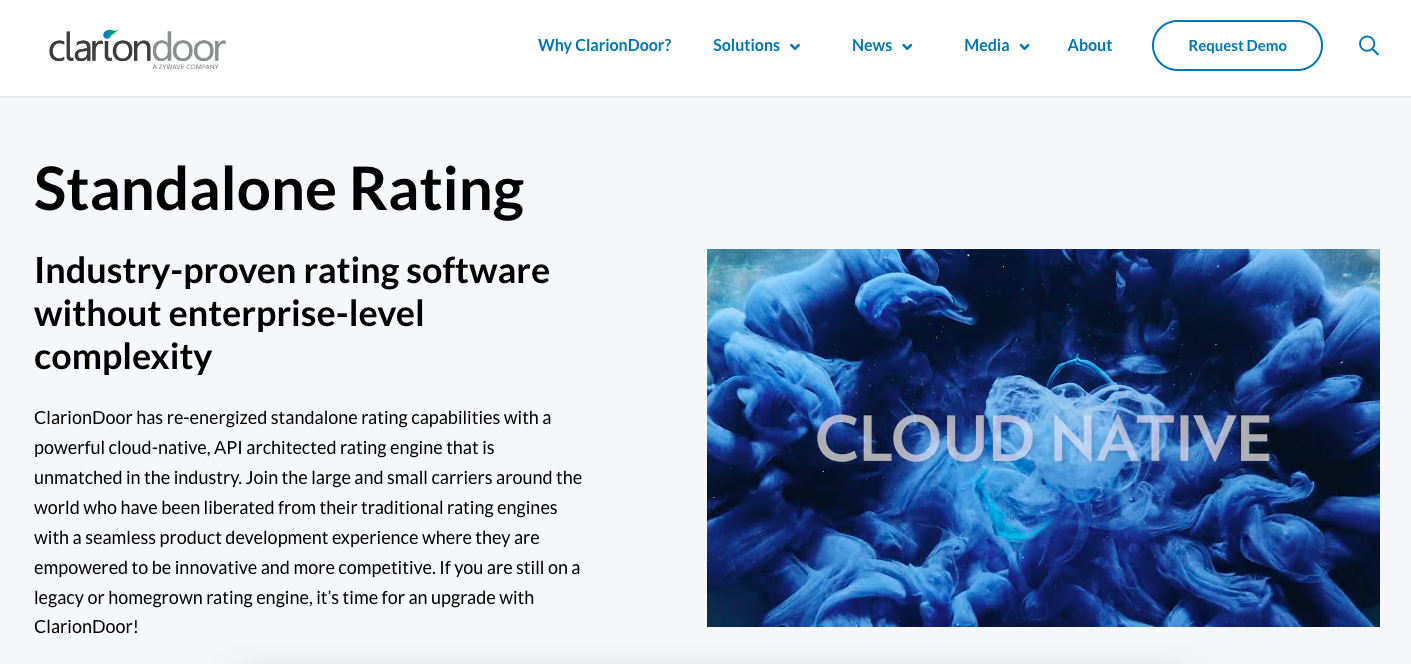
CD Rating is designed to handle a high volume of transactions per hour without downtime. It helps insurers automate rate management tasks effectively. Its capabilities ensure carriers can depend on this platform for reliable and continuous rating services.
Top 5 Features:
- High transaction handling capacity
- Real-time rating adjustments
- Integration with underwriting systems
- Continuous uptime and reliability
- Automation of rate management
Five Benefits:
- Handles high transaction volumes
- Ensures continuous operations
- Improves rate management efficiency
- Improves underwriting accuracy
- Supports diverse insurance products
Two Cons:
- May require significant customization
- Higher cost for advanced features
Best For: Insurers seeking a rating engine that prioritizes performance and reliability. It’s particularly suitable for those looking to process a significant volume of transactions efficiently with zero downtime.
37. TurboRater
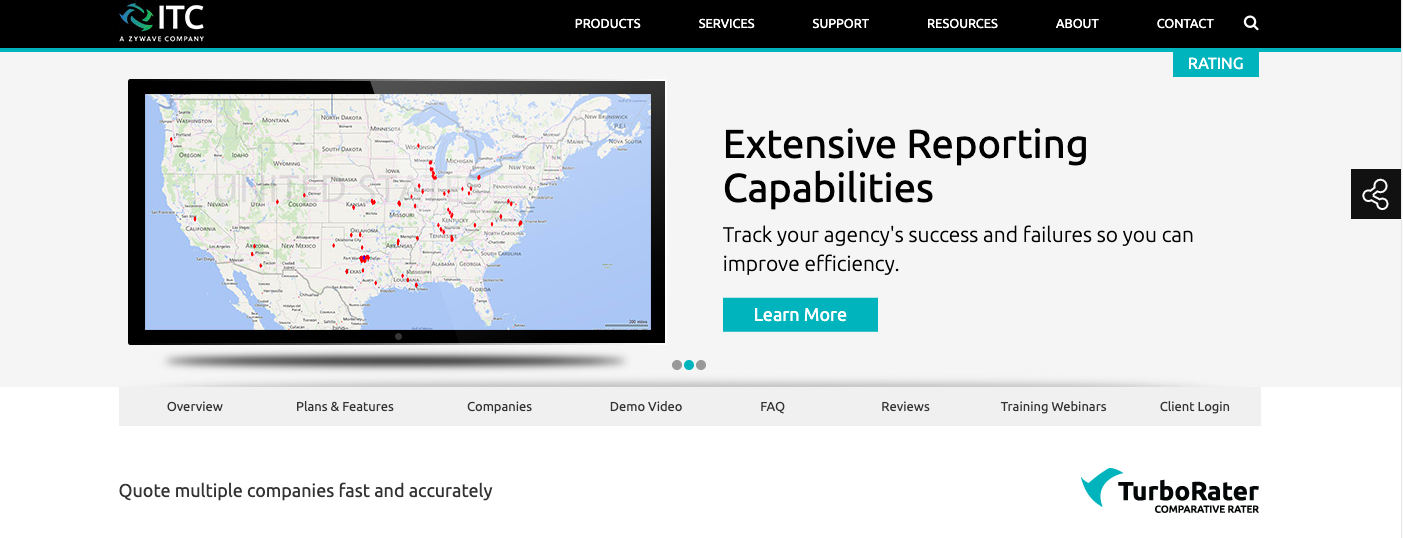
TurboRater is a favorite among agencies looking for quick, accurate, and user-friendly rate comparison tools. This software combines speed and accuracy to help agents deliver multiple quotes from various carriers in minutes. TurboRater emphasizes its utility for both personal and commercial lines.
Top 5 Features:
- Quick rate comparison tools
- Integration with multiple carriers
- Real-time quote generation
- User-friendly interface
- Automated policy processing
Five Benefits:
- Improves quoting efficiency
- Provides accurate rate comparisons
- Increases agent productivity
- Improves customer satisfaction
- Reduces processing time
Two Cons:
- Dependent on carrier integrations
- May have a learning curve for new users
Best For: Insurance agencies seeking to improve their quoting processes and optimize sales strategies in both personal and commercial markets.
38. Applied Epic
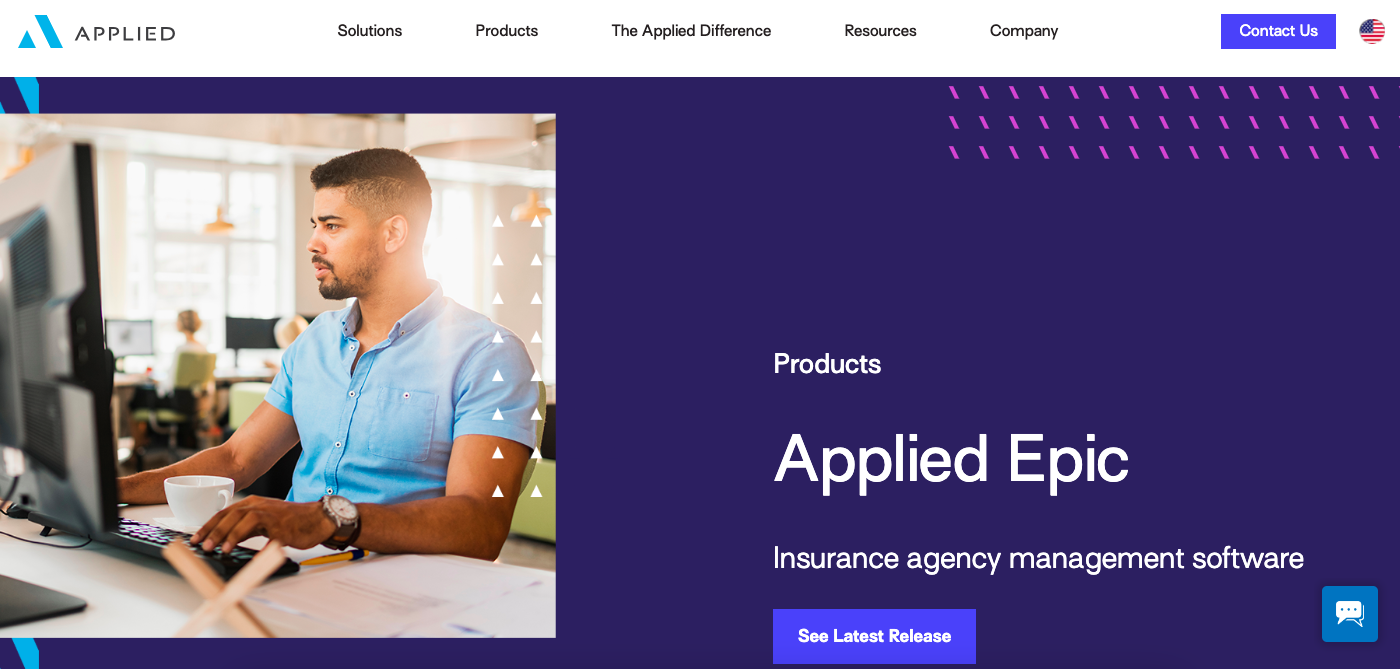
Applied Epic covers many functionalities, including customer relationship management, policy and benefits administration, sales automation, and financial accounting processes. The platform is known for its flexible, secure environment and powerful automation capabilities.
Top 5 Features:
- Comprehensive customer relationship management (CRM)
- Advanced policy and benefits administration
- Robust sales automation tools
- Integrated financial accounting processes
- Secure and flexible cloud-based environment
Five Benefits:
- Improves operational efficiency
- Improves customer service with comprehensive CRM
- Automates routine tasks, reducing manual work
- Increases visibility and control over the business
- Scales easily with business growth
Two Cons:
- May require significant time to implement
- Higher cost for smaller agencies
Best For: Insurance agencies looking for a management system that can seamlessly handle different automation tasks and drive visibility and productivity.
39. Applied Rater
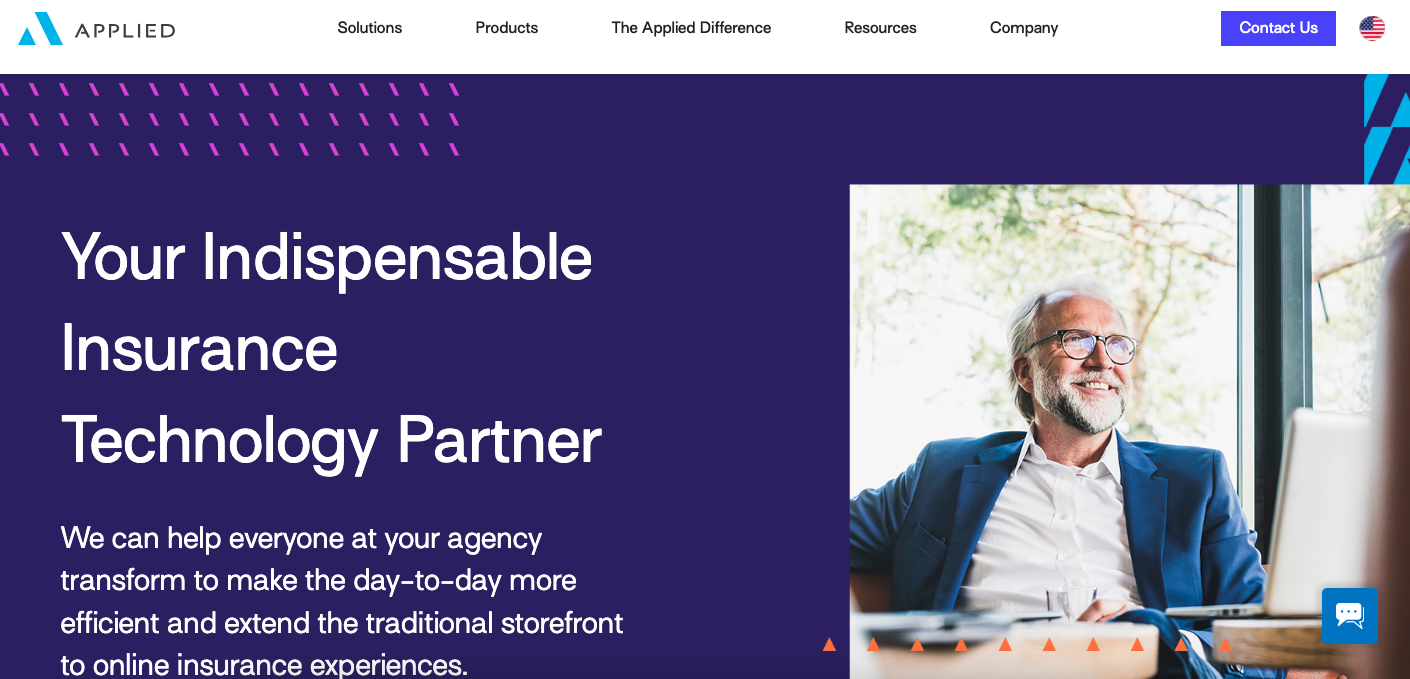
Applied Rater aims to Improve the quoting process for independent agencies. It enables agencies to compare rates from several carriers quickly and accurately, integrating with over 500 insurance providers. Its focus on automation and its ability to generate multiple quotes at once has made it a good choice for insurance professionals looking to optimize their workflows and improve client offerings.
Top 5 Features:
- Quick rate comparisons
- Integration with over 500 carriers
- Real-time quoting capabilities
- Automation of repetitive tasks
- User-friendly interface
Five Benefits:
- Speeds up the quoting process
- Improves accuracy in rate comparisons
- Reduces manual data entry
- Improves client satisfaction with quick responses
- Increases operational efficiency
Two Cons:
- Limited to available carrier integrations
- May have a learning curve for new users
Best For: Independent agencies that seek to provide quick, accurate, and broad policy comparisons to their customers.
40. LexisNexis Electronic Inspection Report
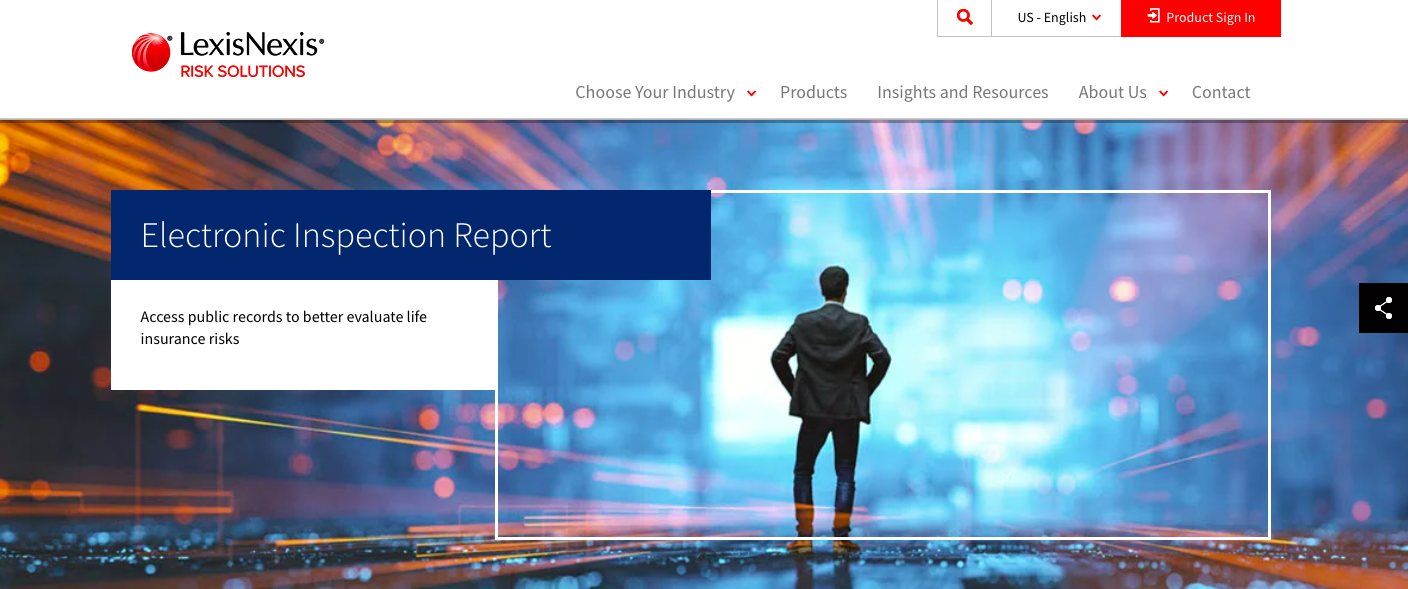
LexisNexis Electronic Inspection Report provides a digital solution for efficiently managing property inspections. This tool leverages data and advanced analytics to deliver accurate and timely reports, and streamline the inspection process.
Top 5 Features:
- Automated data collection
- Comprehensive property inspection reports
- Advanced analytics and risk assessment
- Real-time data integration
- Customizable report formats
Five Benefits:
- Saves time with automated data collection
- Provides thorough and accurate inspection reports
- Improves risk assessment with advanced analytics
- Ensures up-to-date information with real-time data integration
- Offers flexibility with customizable report formats
Two Cons:
- May involve a learning curve for first-time users
- Dependence on data quality and availability
Best For: Insurance companies looking to streamline their property inspection processes with a reliable, data-driven solution that Improves accuracy and efficiency in risk assessment.
41. Quotit
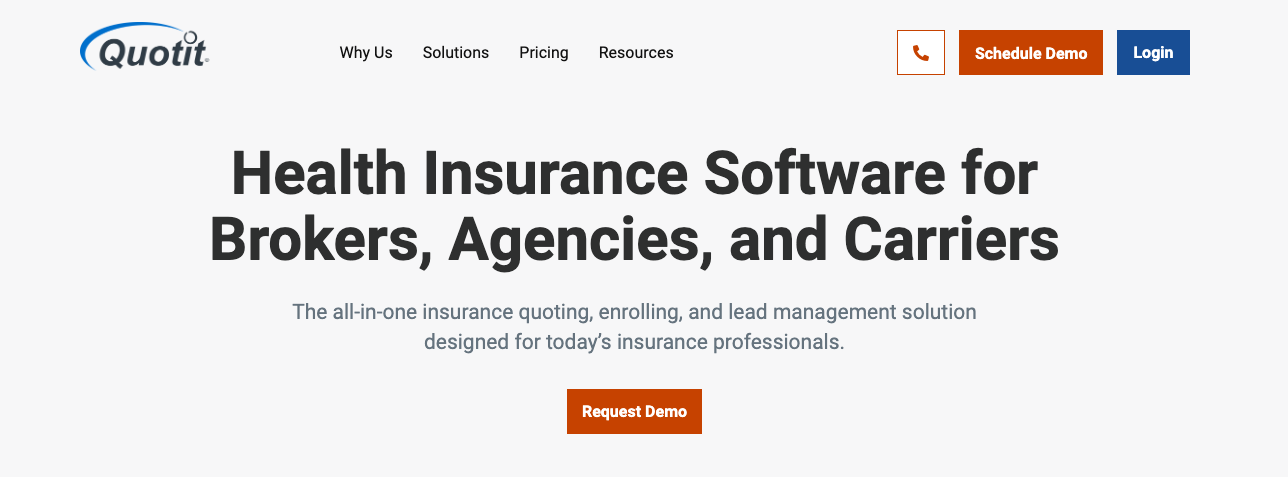
Quotit is a cloud-based quoting and CRM software designed for insurance agents. It provides a platform to compare multiple insurance plans quickly and efficiently.
Top 5 Features:
- Multi-carrier quoting
- Integrated CRM
- Real-time pricing updates
- Customizable quote templates
- Lead management tools
Five Benefits:
- Speeds up the quoting process with multi-carrier comparisons
- Improves customer relationship management with integrated CRM
- Ensures accurate quotes with real-time pricing updates
- Allows for personalized communication with customizable quote templates
- Improves sales workflow with efficient lead management tools
Two Cons:
- May require training to fully utilize all features
- Can be costly for small agencies
Best For: Insurance agents and agencies looking for an efficient quoting solution that integrates CRM functionalities to improve customer management.
42. AdvantageGo | underwriting
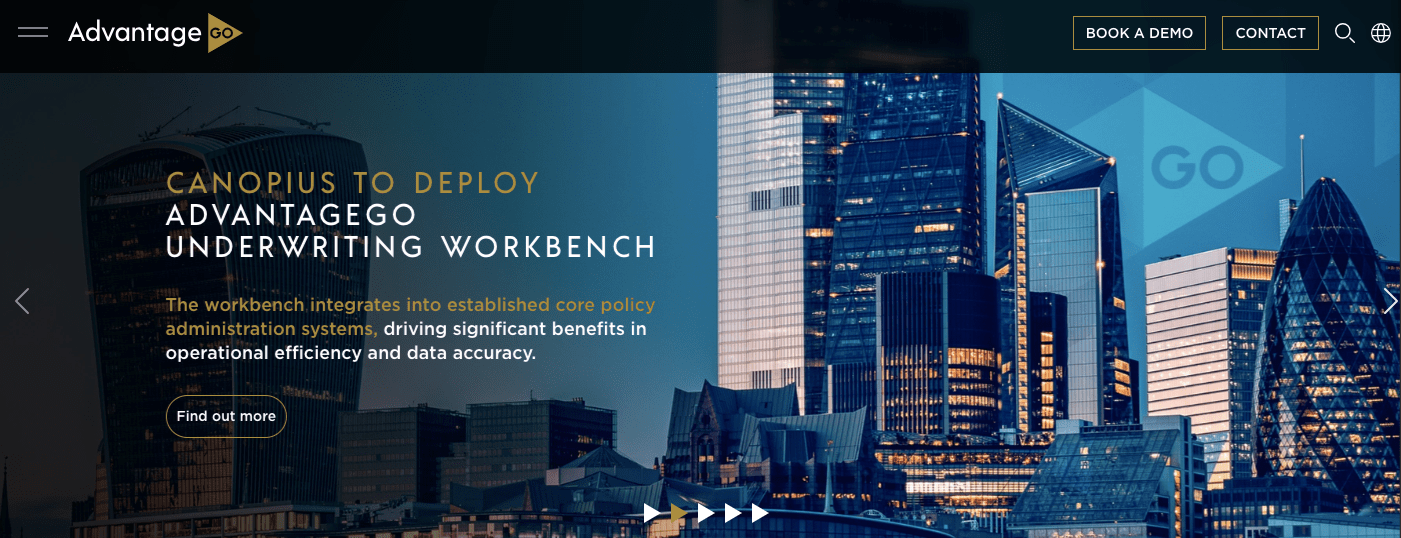
AdvantageGo streamlines the knowledge and decision-making process of underwriters. The platform prioritizes analytics-driven insights throughout the underwriting lifecycle. It offers a multi-product, multi-language, and multi-currency platform that facilitates flexibility and caters to varying digital channels and B2B models.
Top 5 Features:
- Analytics-driven insights
- Multi-product support
- Multi-language capabilities
- Multi-currency platform
- Flexible integration with digital channels
Five Benefits:
- Improves underwriting decision-making
- Supports global operations
- Adapts to various digital channels
- Increases operational flexibility
- Improves data-driven insights
Two Cons:
- Higher initial setup cost
- May require training for effective use
Best For: Commercial insurance carriers that aim for a digital underwriting approach and seek to improve their decision-making capabilities.
43. Pega Insurance Underwriting
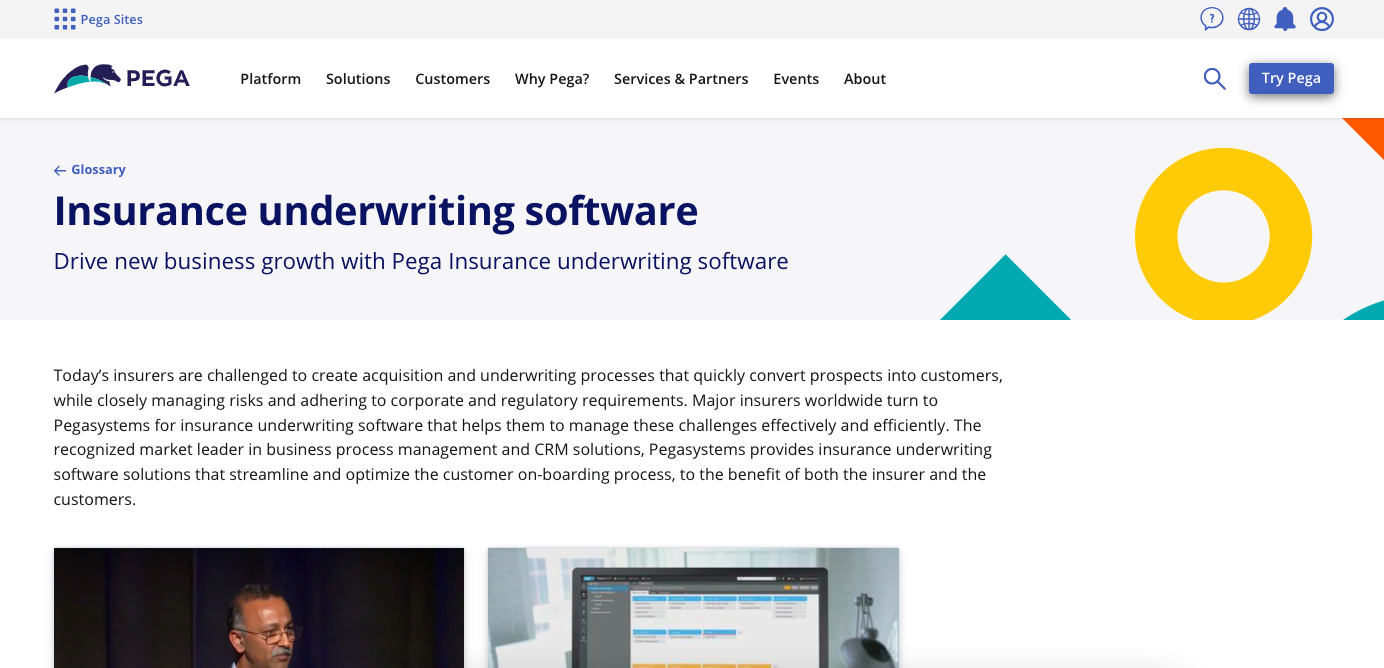
Pega's advanced business process management and CRM solutions streamline customer onboarding and optimize automated processes, supporting insurers in overcoming market challenges.
Top 5 Features:
- Advanced business process management
- Comprehensive CRM solutions
- Streamlined customer onboarding
- Optimized automated processes
- Integration with existing systems
Five Benefits:
- Improves process efficiency
- Improves underwriting quality and consistency
- Reduces operational costs
- Strengthens customer relationships
- Supports regulatory compliance
Two Cons:
- Higher initial implementation cost
- Complexity in integrating with legacy systems
Best For: Major insurers looking for an underwriting solution that can significantly improve their process efficiency while providing a superior customer experience.
44. Ebix Evolution

Ebix Evolution offers a blend of a modern software environment with an extensive feature set tailored for underwriting agencies and brokers. Its system specializes in carrier systems, insurance certificate management, and risk management. Ebix Evolution aims to modernize the underwriting process with innovative technology and integrated workflows.
Top 5 Features:
- Modern software environment
- Extensive feature set
- Carrier systems specialization
- Insurance certificate management
- Integrated risk management
Five Benefits:
- Modernizes the underwriting process
- Improves policy management efficiency
- Reduces administrative workload
- Improves risk assessment accuracy
- Supports strategic, technology-driven operations
Two Cons:
- Higher initial setup costs
- Requires comprehensive training
Best For: Large insurance brokers and underwriting agencies looking for a comprehensive, integrated system to improve policy management and ensure technology-driven risk management.
45. BriteCore
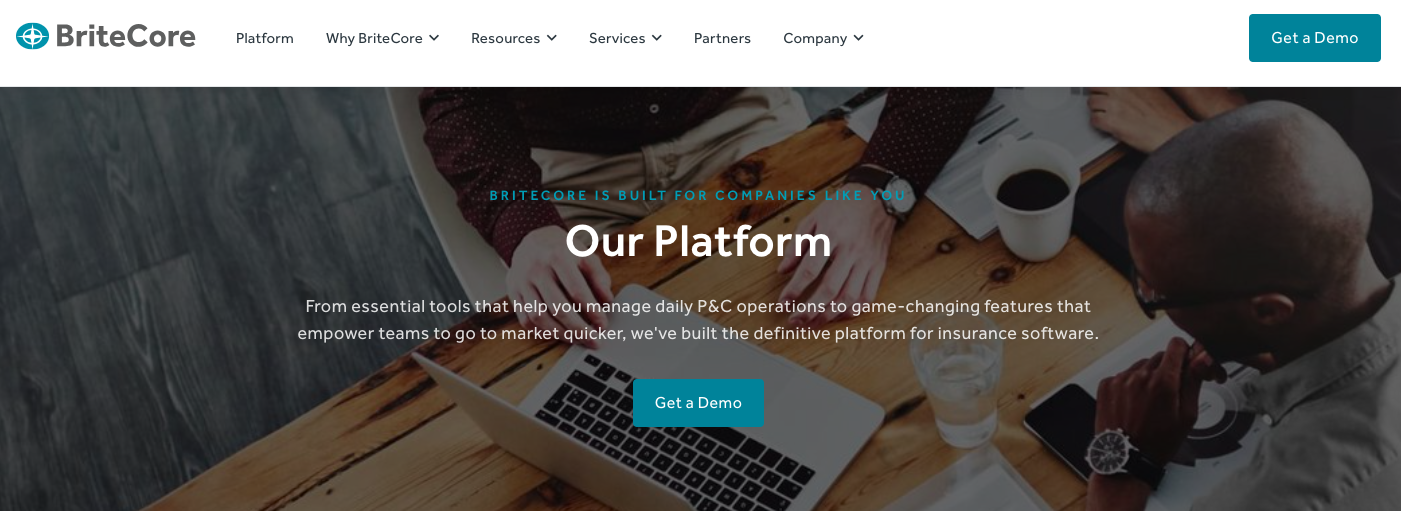
BriteCore is renowned for its robust, cloud-native core insurance platform, which redefines how property and casualty insurers operate. It provides end-to-end insurance capabilities to insurance carriers, MGAs, and InsurTechs. The platform, which includes policy administration, claims management, underwriting, billing, and reporting, helps optimize efficiencies and maintains scalability and security.
Top 5 Features:
- Cloud-native core platform
- End-to-end insurance capabilities
- Advanced policy administration
- Comprehensive claims management
- Integrated billing and reporting
Five Benefits:
- Improves operational efficiency
- Supports digital transformation initiatives
- Scales with business growth
- Improves data security
- Optimizes insurance processes
Two Cons:
- May require significant customization
- Higher initial investment
Best For: Progressive insurance carriers, MGAs, and InsurTech firms seeking to transform operations with a comprehensive platform that scales with growth.
46. Total Systems Bluescape
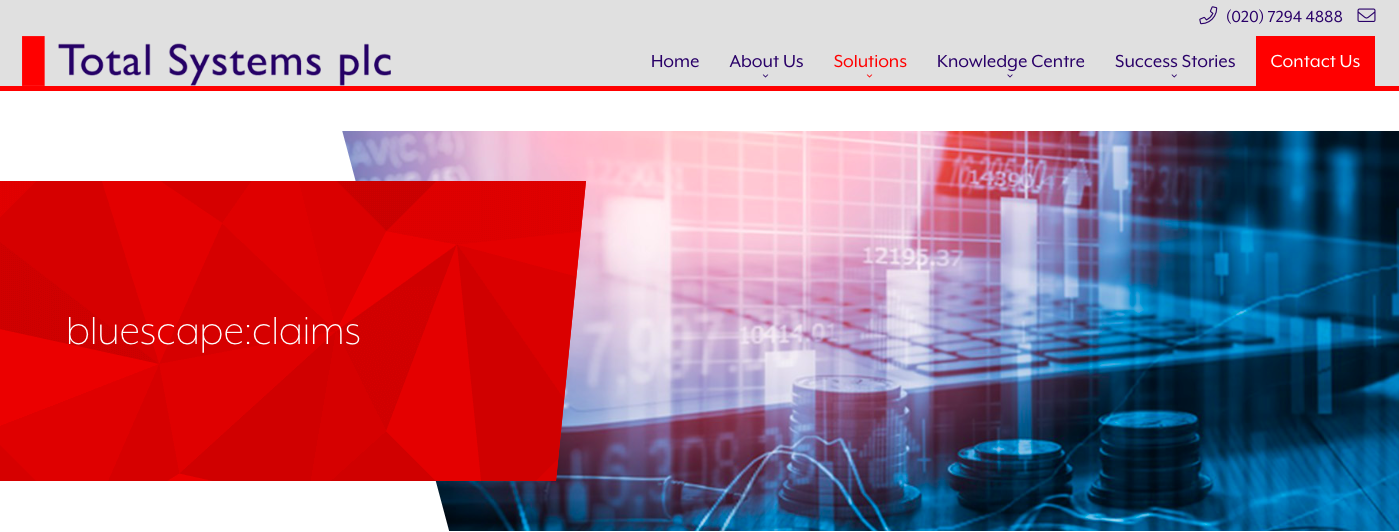
Total Systems Bluescape offers rich functionality that covers the entire insurance lifecycle. This includes sales channel support for all lines of business across multiple currencies. Through its four core modules—Quote, Rating, Policy, and Claims—Bluescape presents a versatile solution for insurers looking for a comprehensive platform to manage their end-to-end operations.
Top 5 Features:
- Comprehensive insurance lifecycle management
- Multi-currency support
- Multi-line business support
- Four core modules: Quote, Rating, Policy, and Claims
- Integration with sales channels
Five Benefits:
- Improves operational efficiency
- Supports diverse business lines
- Facilitates global operations
- Streamlines insurance processes
- Provides a single platform for all needs
Two Cons:
- May require significant customization
- Higher cost for full-feature deployment
Best For: Insurers looking for a platform capable of managing all aspects of the insurance lifecycle on a global scale.
47. ISO Rating Service
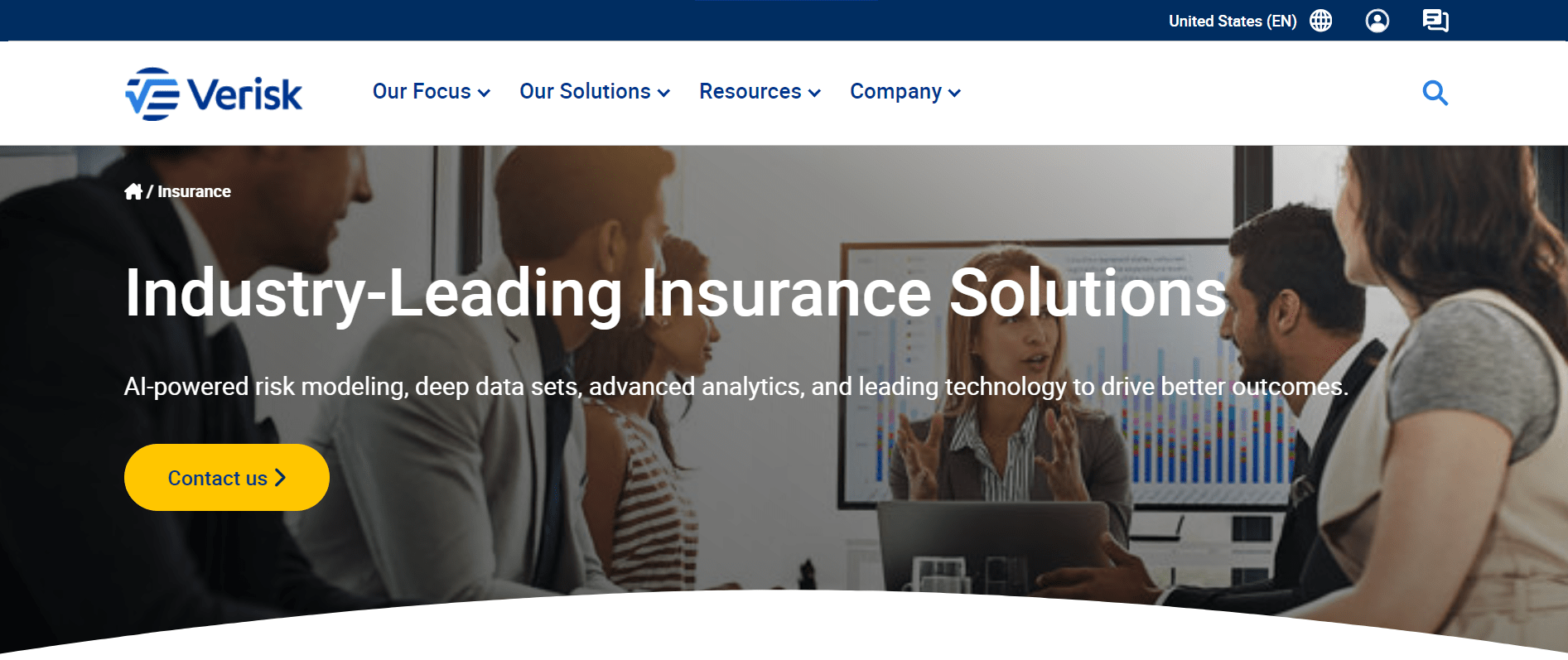
Verisk’s ISO Rating Service offers insurers a comprehensive tool for product development and rating content management. Their rating service is designed to provide insurers access to proven ISO content and a platform for managing their custom rating content and rules.
Top 5 Features:
- Comprehensive rating content management
- Access to ISO content
- Custom rating content management
- Regulatory compliance tools
- Competitive pricing strategies
Five Benefits:
- Ensures compliance with regulatory changes
- Improves competitive pricing
- Simplifies product development
- Provides access to industry-standard content
- Supports custom rating needs
Two Cons:
- Dependent on the quality of ISO content
- May require integration with existing systems
Best For: Insurance companies seeking to maintain competitive pricing strategies and compliance, while managing intricate rating systems.
48. Bdeo
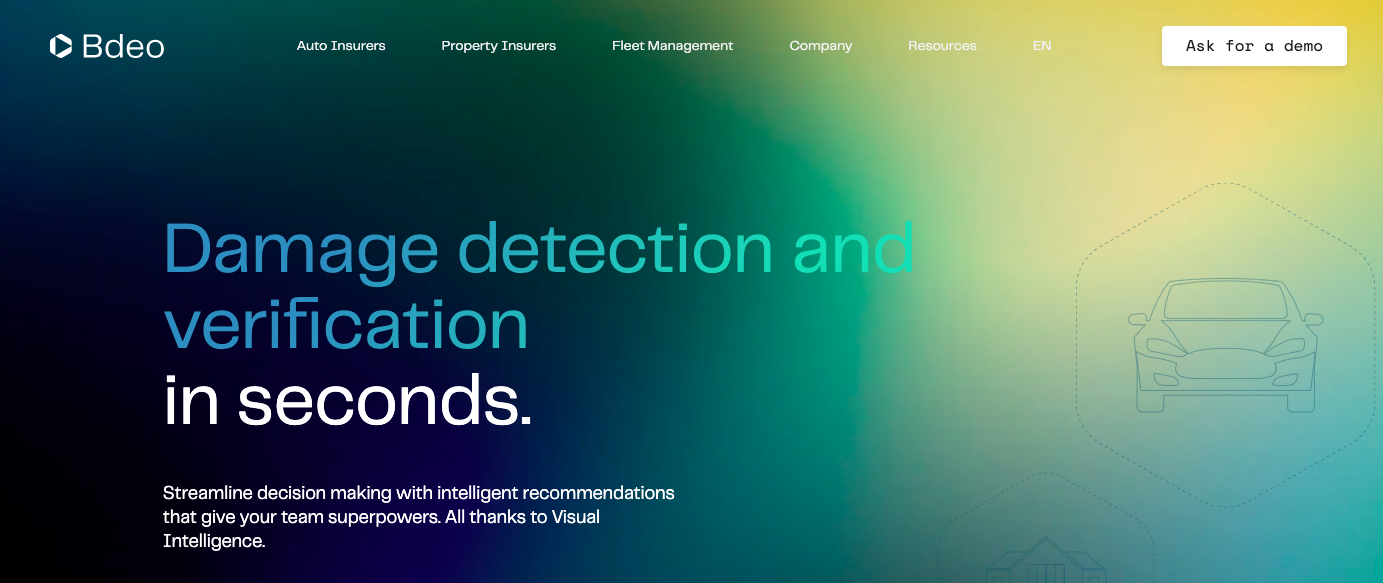
Bdeo digitizes the interactions of insurance companies with their end customers. It combines technologies like artificial intelligence, geo-localized video channels, and augmented reality to revolutionize underwriting and claims management. Video delivers tools for damage valuation and verification processes, aiming to reduce management time and improve inspection costs while leaving a digital evidence trail with blockchain.
Top 5 Features:
- Visual intelligence technology
- AI-powered damage valuation
- Geo-localized video channels
- Augmented reality tools
- Blockchain digital evidence trail
Five Benefits:
- Reduces management time
- Improves accuracy of inspections
- Improves customer interaction
- Lowers inspection costs
- Provides secure digital evidence
Two Cons:
- May require a substantial initial investment
- Limited to markets with high digital adoption
Best For: Insurance companies that aim to modernize their operations with visual intelligence, especially in markets where digital transformation is a priority.
Features to Look for When Choosing Insurance Underwriting Software
Below, we list some of the most important features to consider when choosing an insurance underwriting software solution.
Risk Assessment and Analysis Capabilities
Risk assessment and analysis capabilities are core components that power the ability to understand, evaluate, and price the risks associated with insuring entities or individuals. These tools analyze vast amounts of data to predict potential loss events, factor in various risk determinants, and suggest optimal pricing strategies.
Integration with Existing Systems and Data Sources
Integration with existing systems and data sources ensures the seamless flow of information and maintains consistency throughout various platforms. Good integration capabilities allow for the pulling and sharing of data from external and internal sources. This fosters a more holistic approach to risk assessment and decision-making.
Regulatory Compliance and Reporting Features
Regulatory compliance and reporting features make sure that all operations align with industry regulations and standards. This function allows companies to manage and demonstrate their adherence to legal requirements, minimizing the risk of compliance breaches and associated penalties.
Customization and Scalability Options
Customization and scalability options ensure that the software can adapt to the changing needs of a growing business. Such flexibility enables companies to tailor the system to their requirements, workflows, and market conditions.
Automated Underwriting and Decision-Making Tools
Automated underwriting and decision-making tools redefine the efficiency and accuracy of the policy approval process. These tools enable faster risk assessments and policy decisions, which improves productivity and customer satisfaction.
Support for Multiple Insurance Products and Lines
Support for multiple insurance products and lines ensures that the software can handle various insurance types, from auto and life to commercial and specialty lines. This provides underwriters with a comprehensive tool to manage diverse portfolios efficiently.
User-Friendly Interface and Ease of Use
A user-friendly interface and ease of use directly impact the speed and effectiveness with which team members can navigate and extract value from the system. These characteristics reduce training time, improve user adoption, and streamline daily operations.
Data Security and Privacy Measures
Ensuring data security and privacy is paramount given the sensitive nature of personal and financial information handled during the underwriting process. Such measures prevent unauthorized access and data breaches. This helps maintain client trust and regulatory compliance.
Customer Relationship Management (CRM) Functionalities
CRM functionalities help insurers manage and analyze customer interactions and data throughout the customer lifecycle. This feature improves customer service, retains clients, and drives sales growth.
Access to Real-Time Data and Analytics
Access to real-time data and analytics enables insurers to make prompt and informed decisions based on the latest information. Incorporating live data streams empowers underwriters to understand and react to rapidly evolving risk profiles and market conditions.
We'll buid your first application for you. At no extra cost.
Let us build your first business application for free. Go from an idea to an application in under 2 weeks.

Collaboration and Communication Tools for Teams
Collaboration and communication tools help foster a cohesive working environment. These tools enable underwriters, managers, and support staff to work together effectively, whether they are in the same office or distributed globally.
Cloud-Based vs. On-Premise Deployment Options
Cloud-based solutions offer accessibility and scalability while on-premises options provide Improved control and security. The choice largely depends on the company's infrastructure, regulatory requirements, and business strategy.
Mobile Accessibility and Remote Usage Features
Mobile accessibility and remote usage features enable insurance underwriting staff to access systems and data while on the move. This functionality caters to the need for constant connectivity and supports a more responsive and customer-centric approach.
Provider's Industry Reputation and Customer Support Services
The provider's industry reputation and customer support services can greatly impact the reliability and user experience. A reputable provider with strong customer support assures ongoing assistance, software stability, and trustworthiness.
Cost-effectiveness and ROI considerations
Insurers need to consider the long-term value the software brings in terms of efficiency gains, improved decision-making, and potential revenue growth.
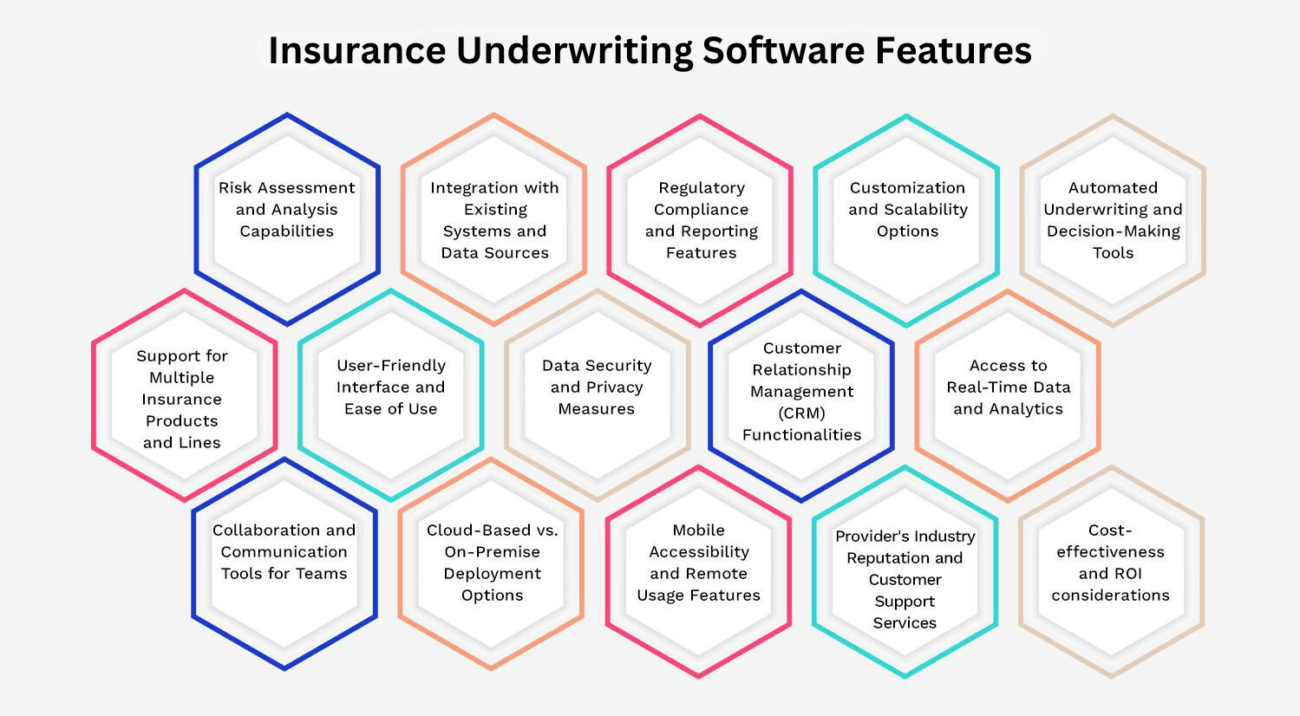
Improve Your Insurance Underwriting with Kohezion
Improve your underwriting processes with Kohezion, an innovative platform that promises to revolutionize the way you handle underwriting tasks and client management. Kohezion offers a customizable, secure, and user-friendly environment to ensure you remain agile, efficient, and ahead of the curve.
Embrace the change that Kohezion brings and watch as it transforms how to approach insurance underwriting!
Conclusion
The insurance underwriting market is undergoing a significant transformation, influenced by the advent of cutting-edge software solutions. These tools offer many benefits, from quicker decision-making to policy personalization. The large number of software options ensures that insurers can find a solution tailored to their specific needs.
Choosing the right insurance underwriting software can help companies improve operational efficiencies, risk assessments, regulatory adherence, and increase customer satisfaction. The software chosen today will pave the way for the success of tomorrow.
Contact us to learn how Kohezion can help you control your data, streamline your workflows, and improve your decision-making capabilities.
Start building with a free account
Frequently Asked Questions
A great underwriting software has the ability to deliver speed, accuracy, and efficiency in risk assessment and decision-making. It offers comprehensive risk analysis, seamless integration with existing systems, and agility in adapting to market and regulatory changes.
User-friendliness, robust data security, and customizable features are also essential for accommodating the specific needs of an insurance organization. The best underwriting software drives business growth, improves customer satisfaction, and ensures a strong return on investment.
To choose the right software for your company, identify your specific underwriting needs and challenges. Evaluate software options based on features such as risk assessment capabilities, ease of integration, compliance support, and data security.
Consider scalability to support your company's growth, and make sure the solution is cost-effective with a clear path to ROI. Assess user interface and support services to ensure smooth adoption. Opt for a software partner with a strong industry reputation who understands your business goals.
Underwriting software typically integrates with other systems through APIs, middleware, or direct database connections. It can synchronize data with CRM, policy administration, claims management, and financial systems to ensure unified information flow across the insurance enterprise. Efficient integration consolidates data, automates processes, and provides a holistic view of operations, improving decision-making and streamlining workflows.
Yes, insurance underwriting software is often customizable. This allows it to align with specific business processes, regulatory requirements, and unique risk assessment strategies. Customization can range from configuring underwriting rules and workflows to tailoring interfaces and reports. This flexibility ensures that the software can evolve with the company's growth and changing market needs.
Insurance underwriting software incorporates built-in compliance checks, updating underwriting rules to reflect changing laws, and generating reports for regulatory filings to ensure regulatory compliance. These systems often feature audit trails and document management to support verifications and inspections, helping insurers adhere to industry standards and avoid penalties.
